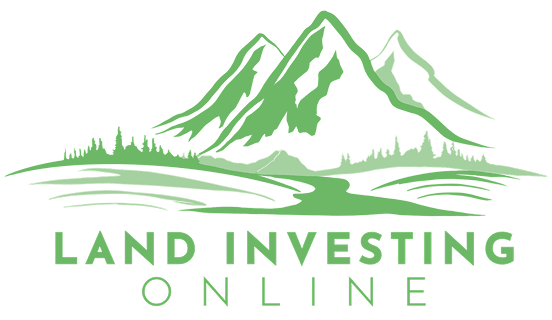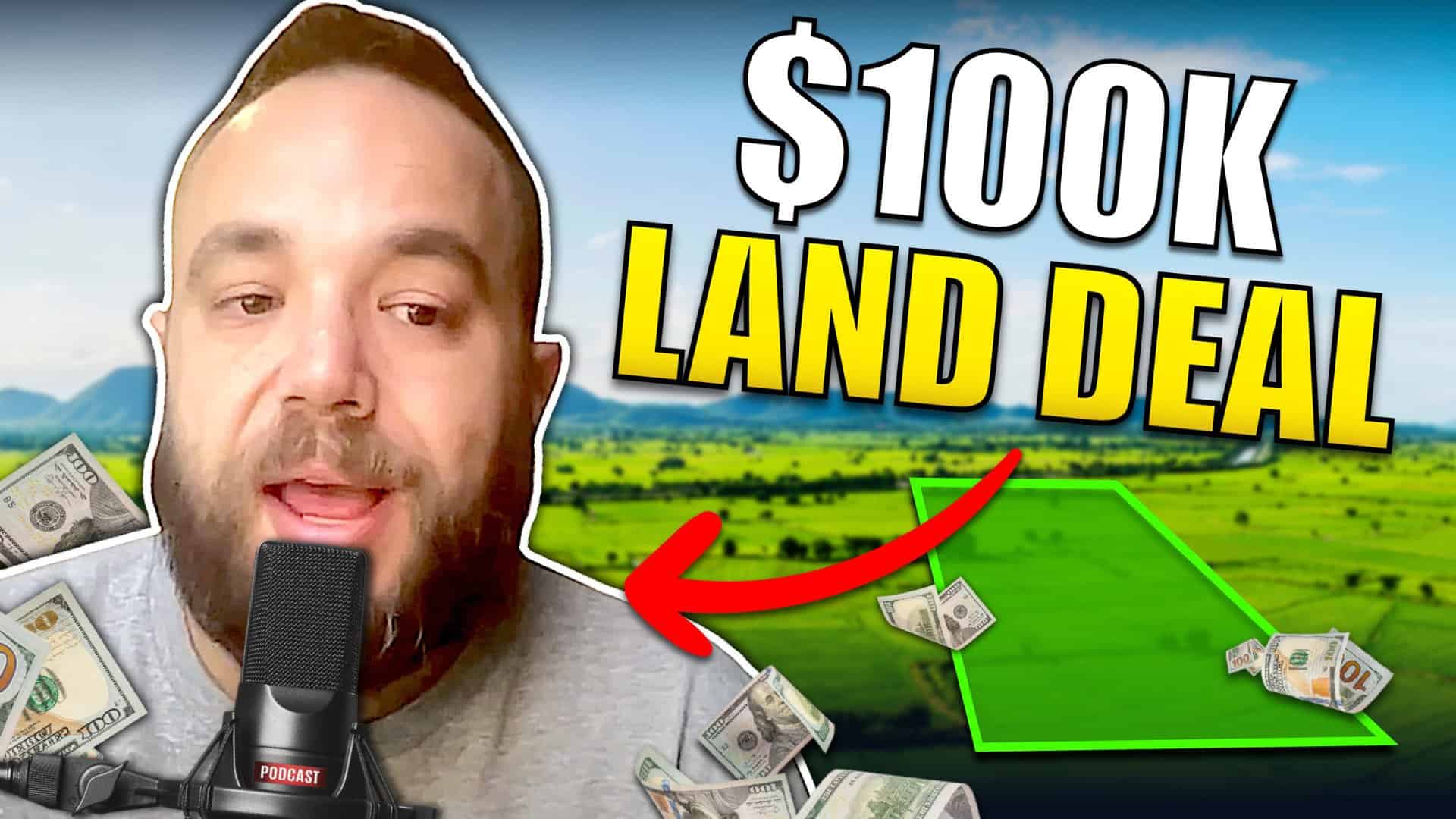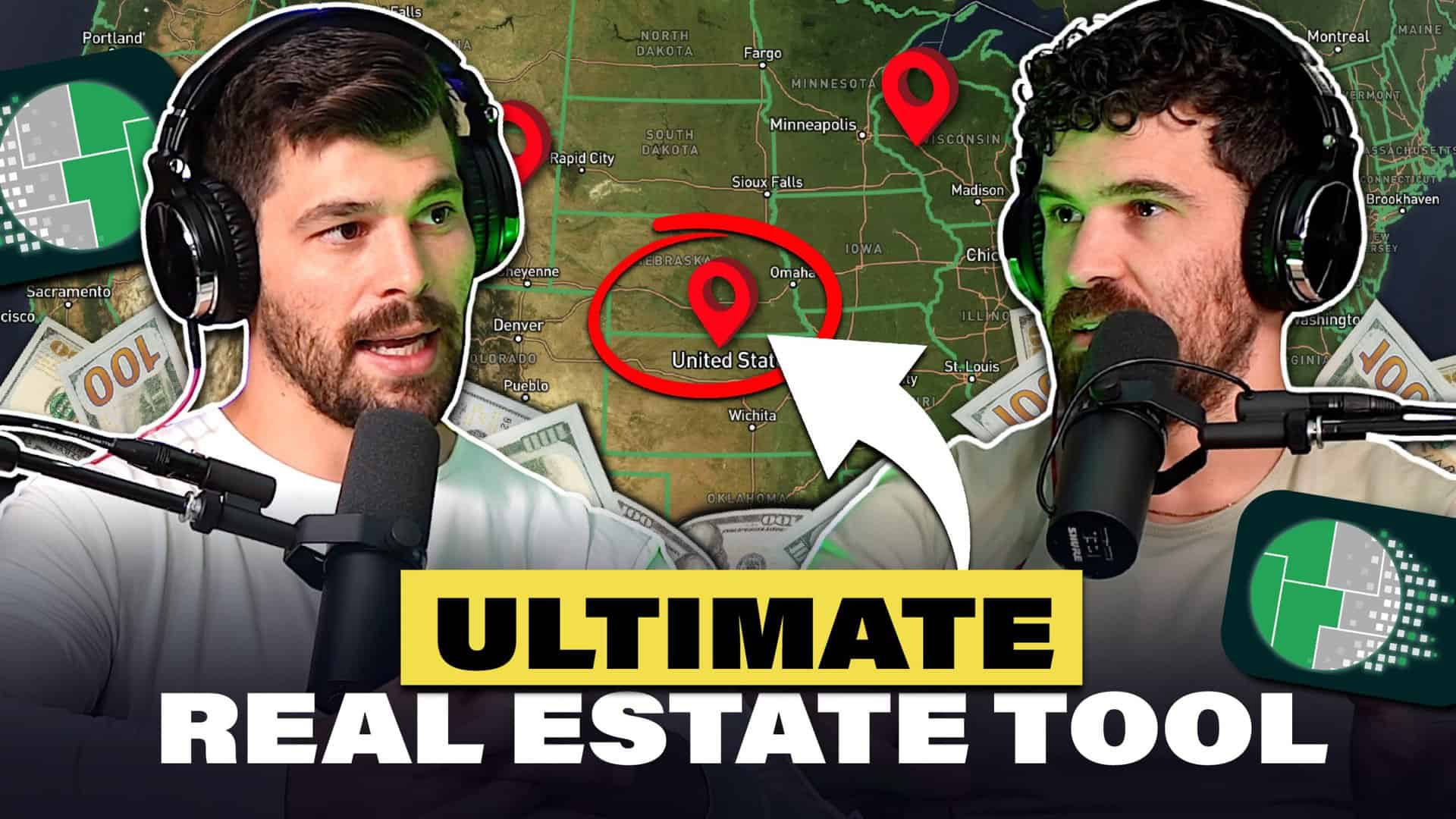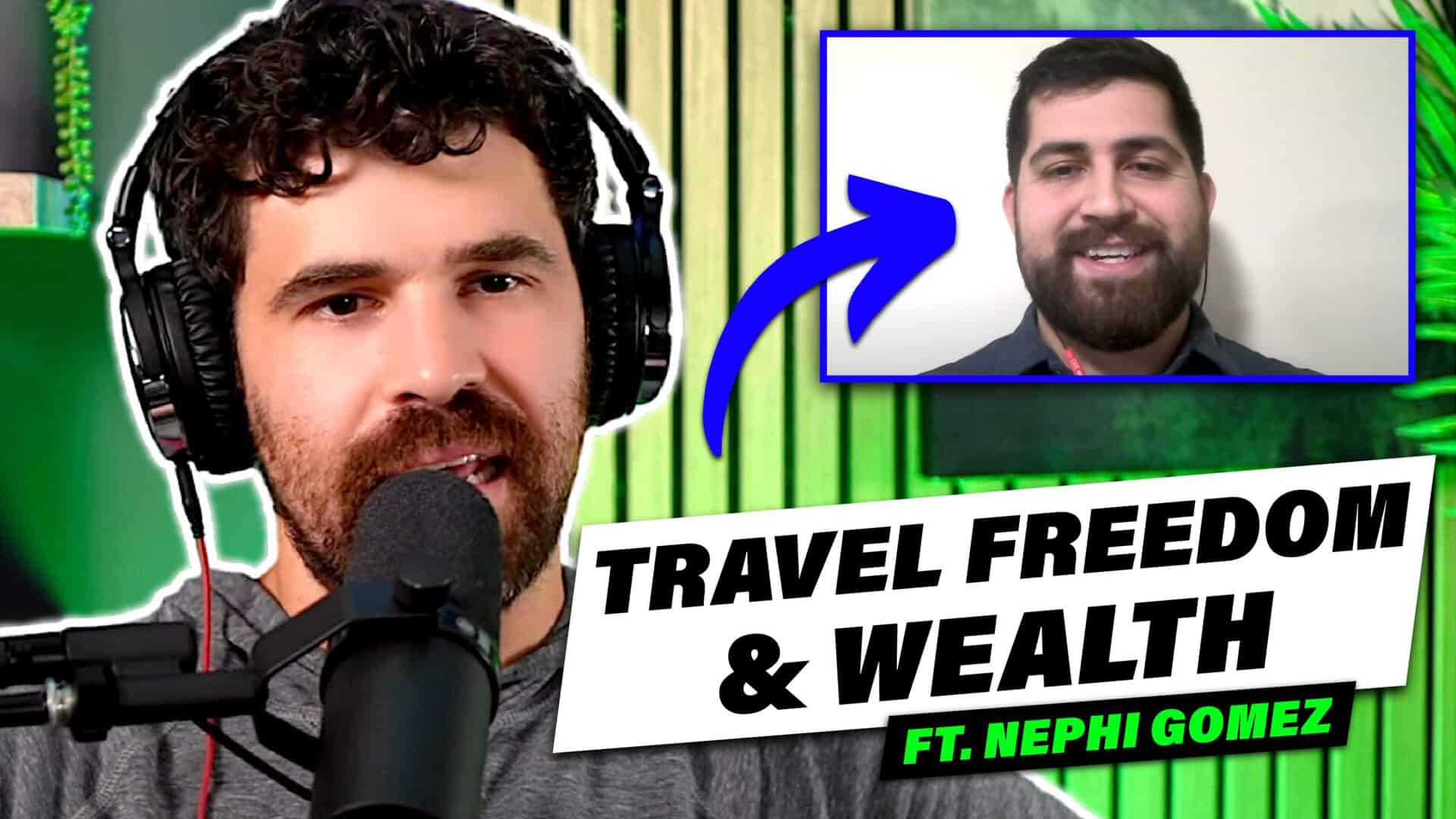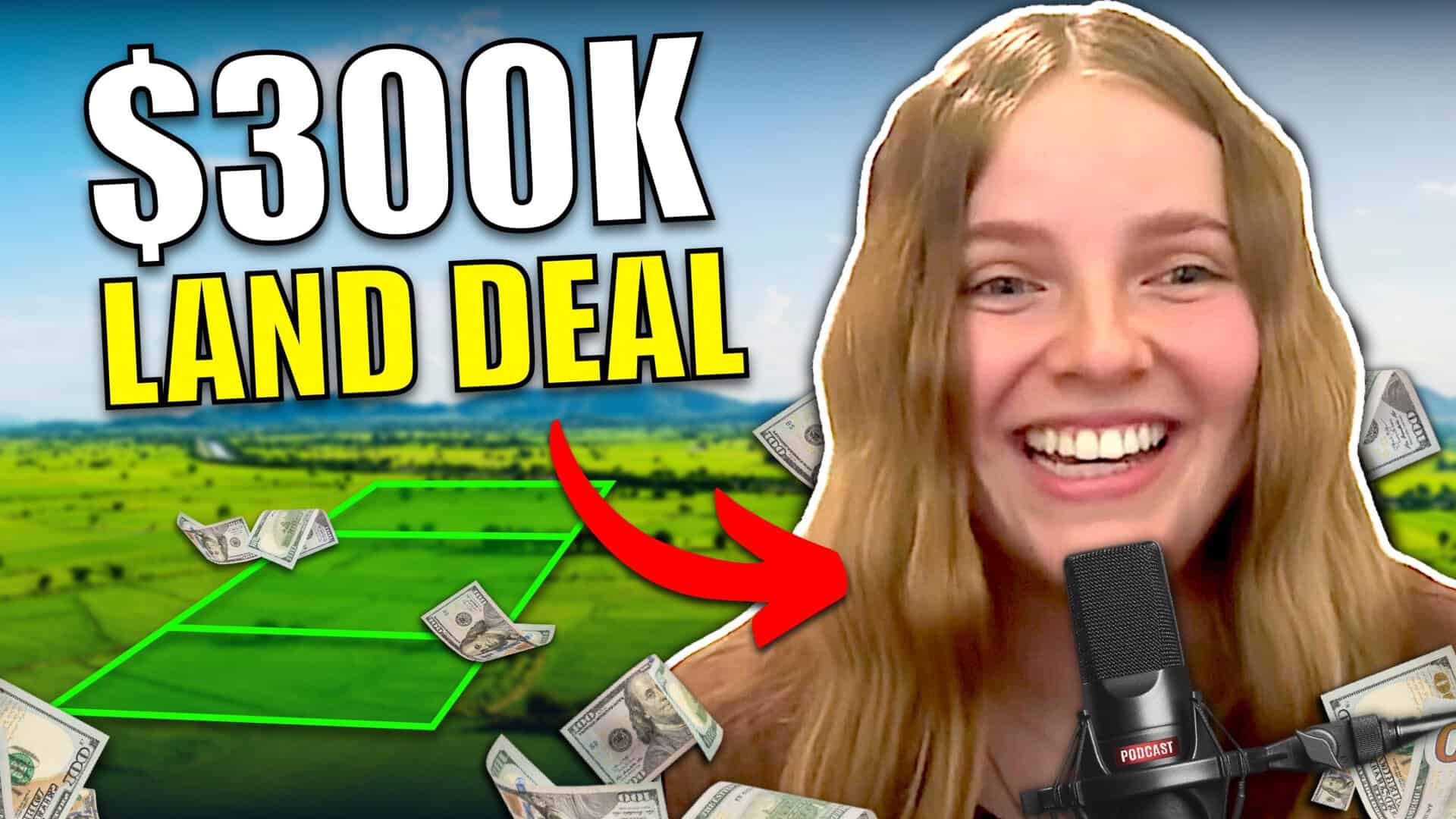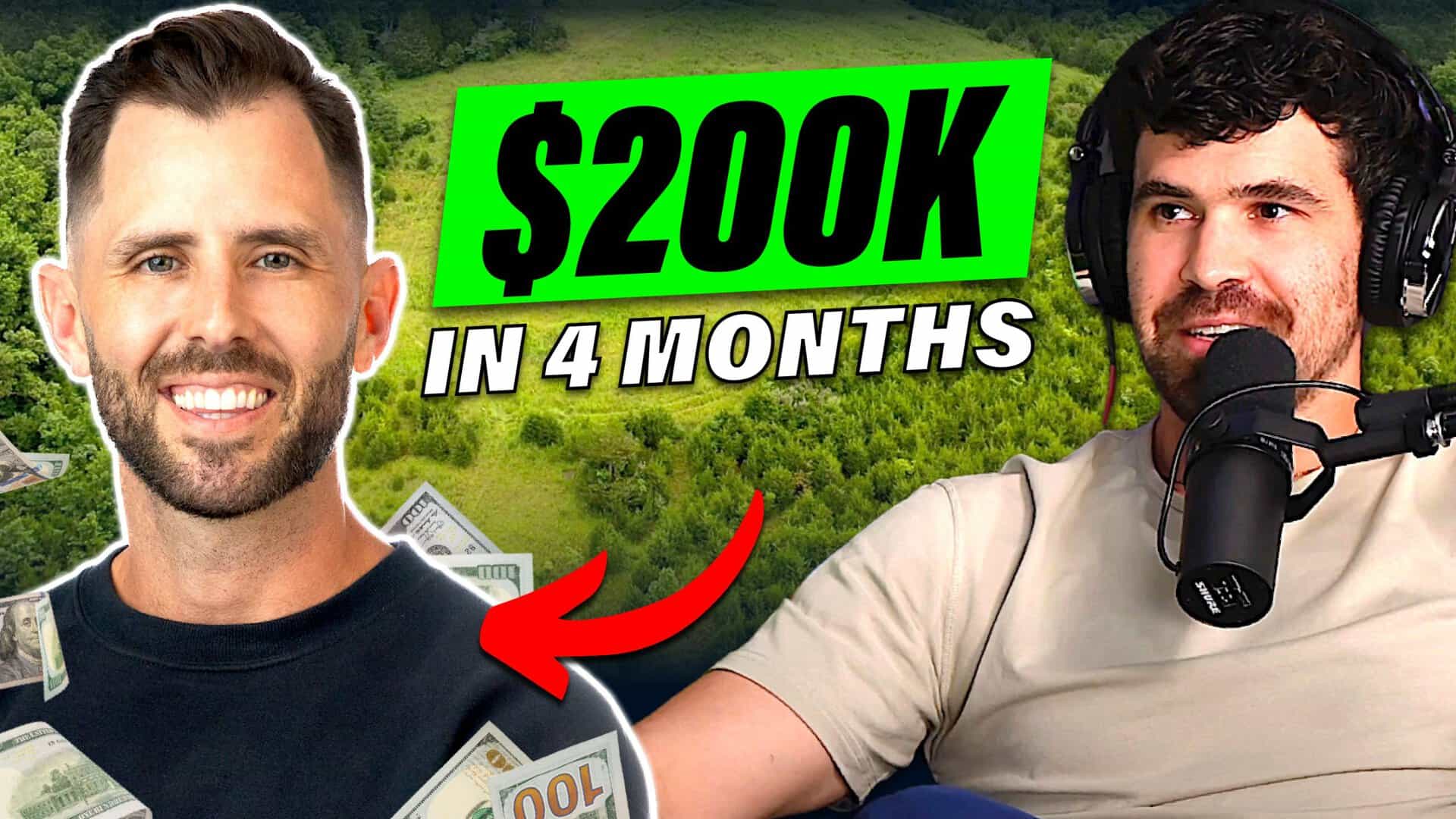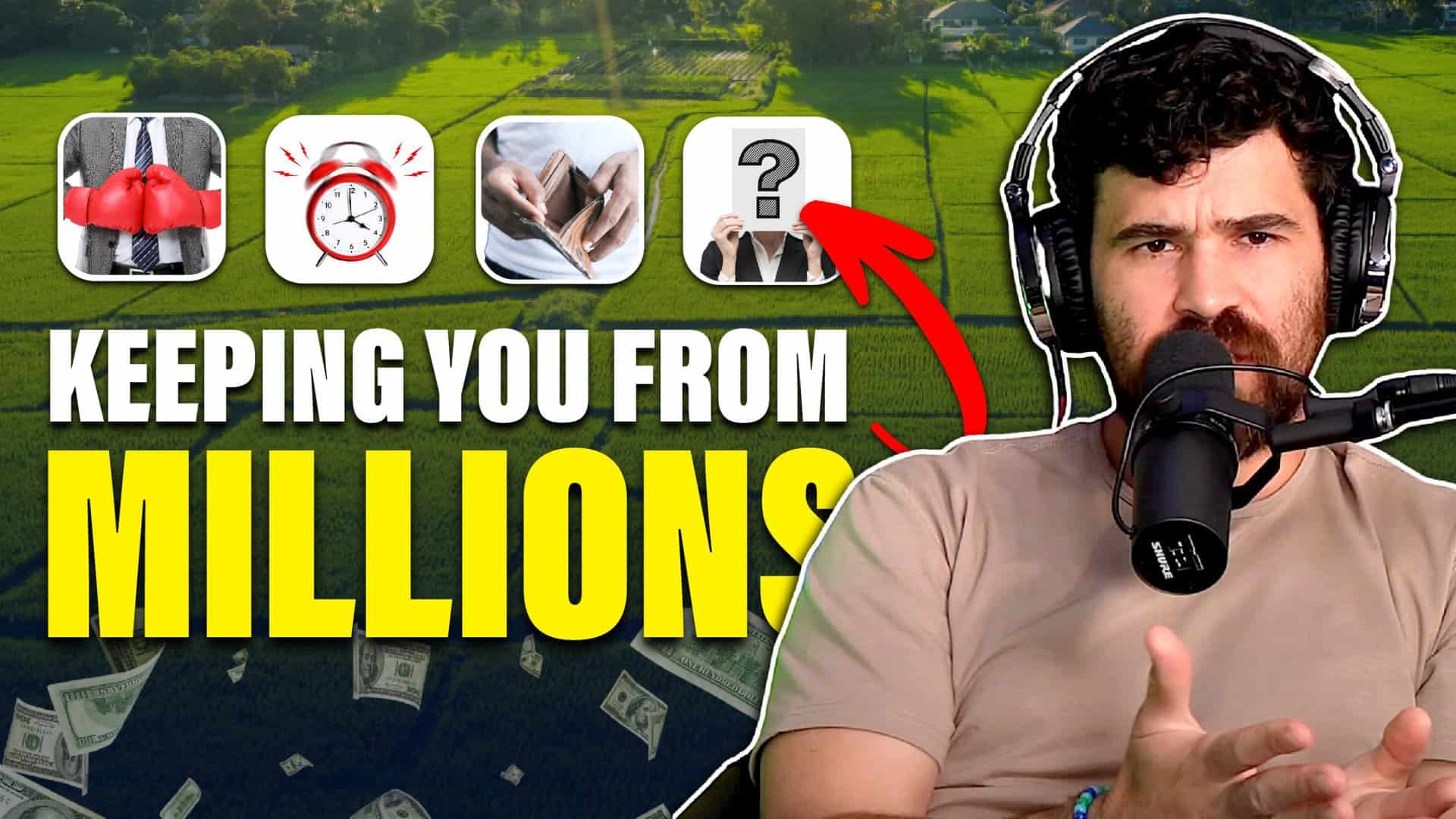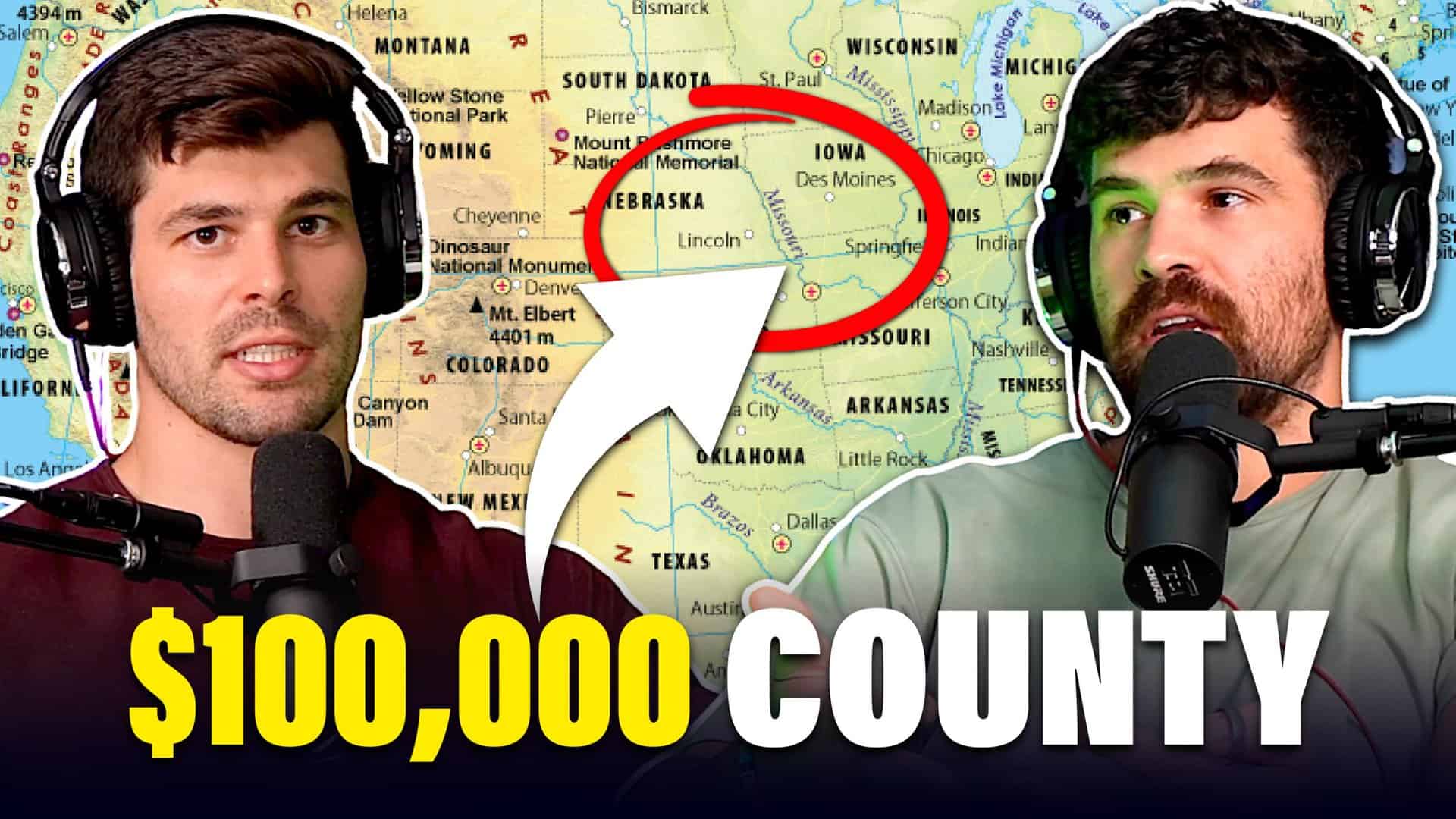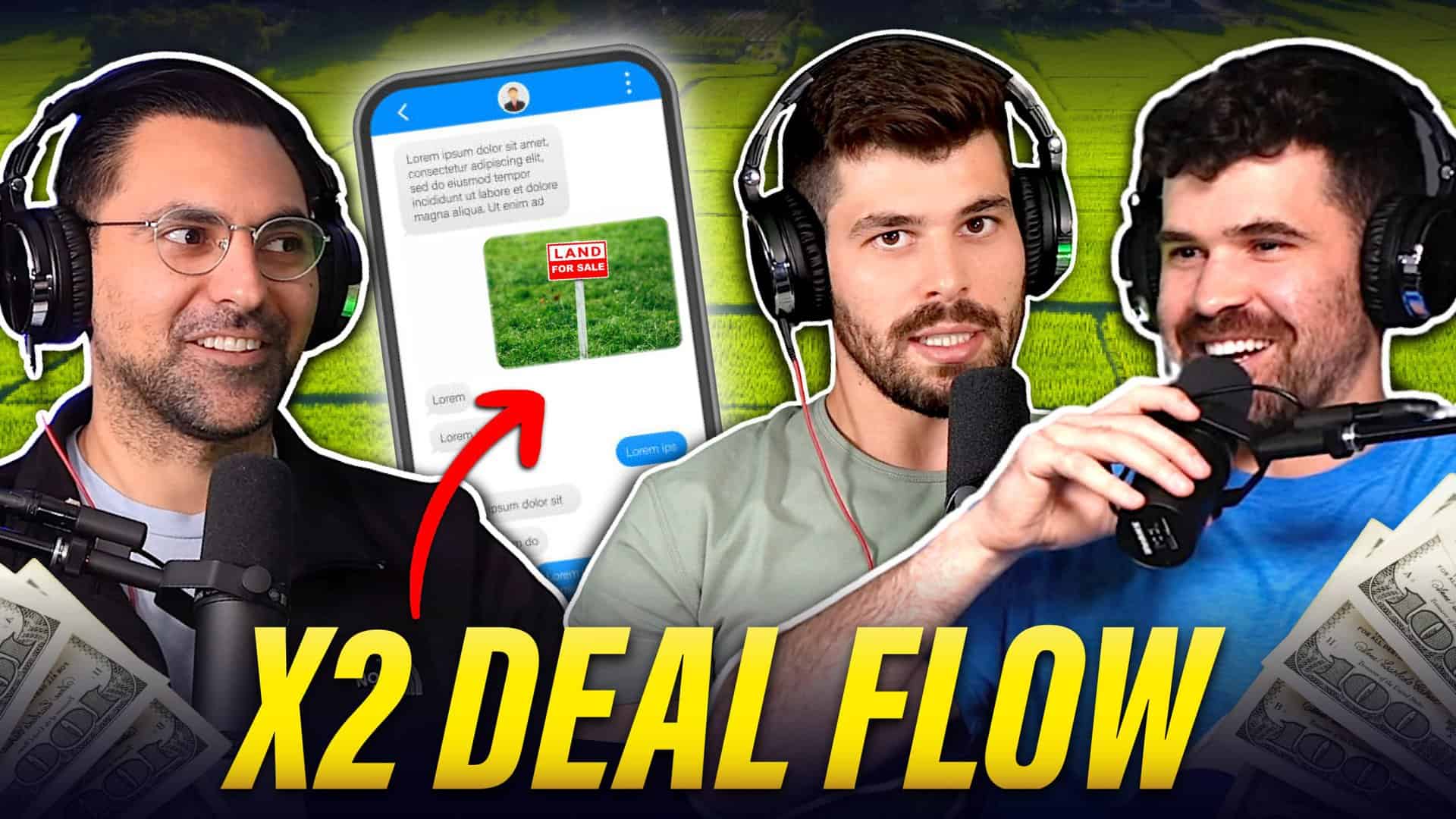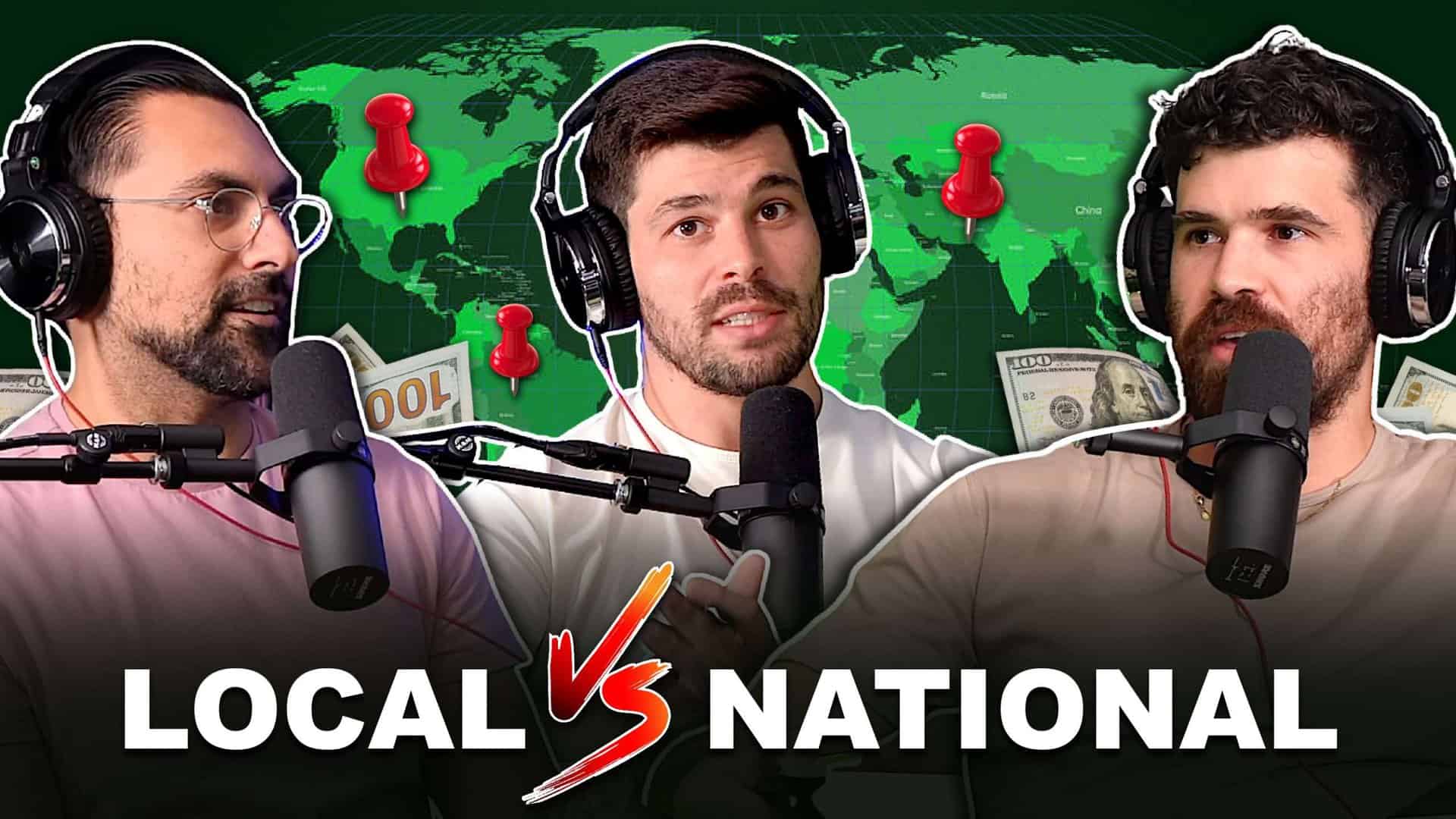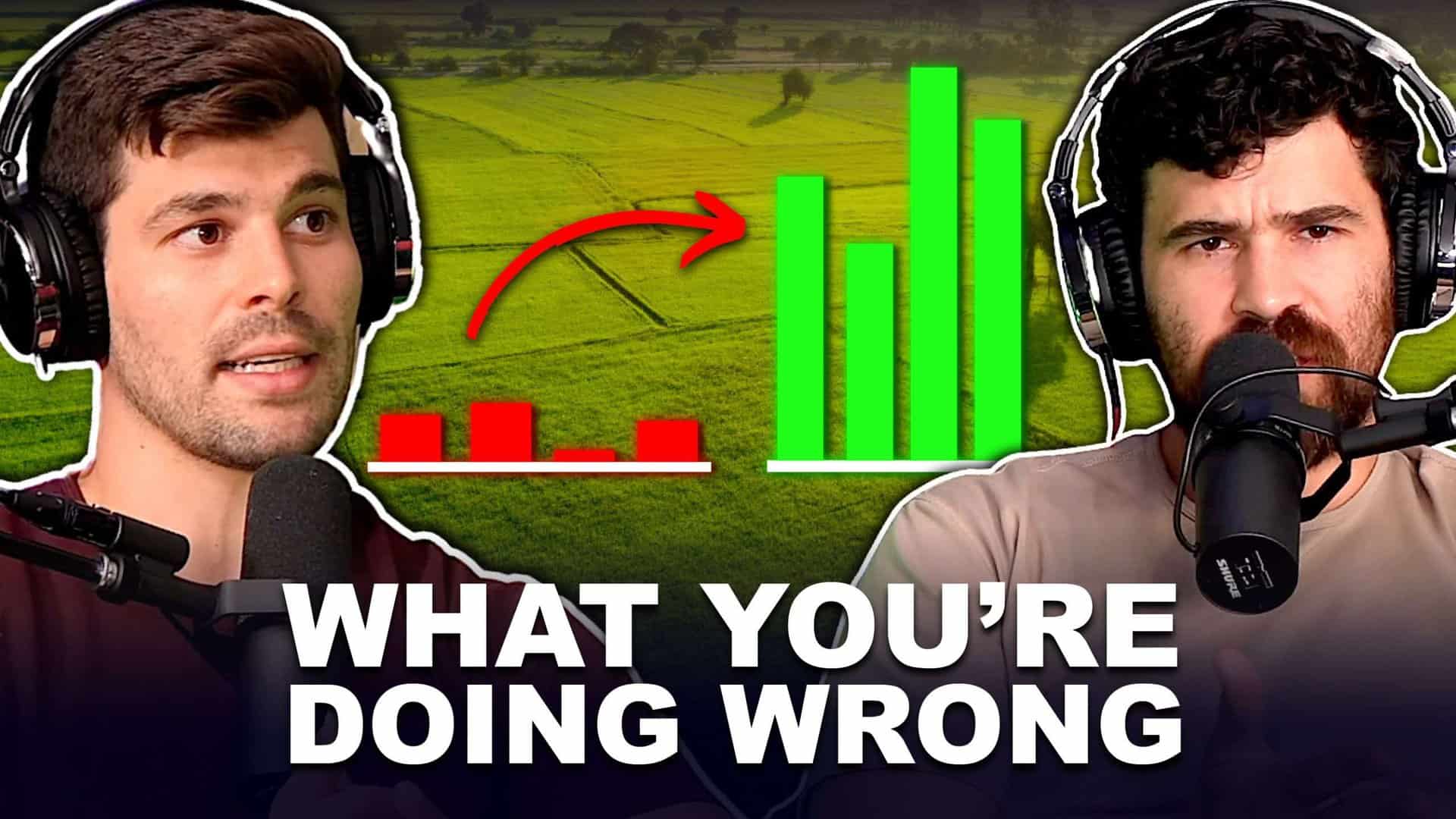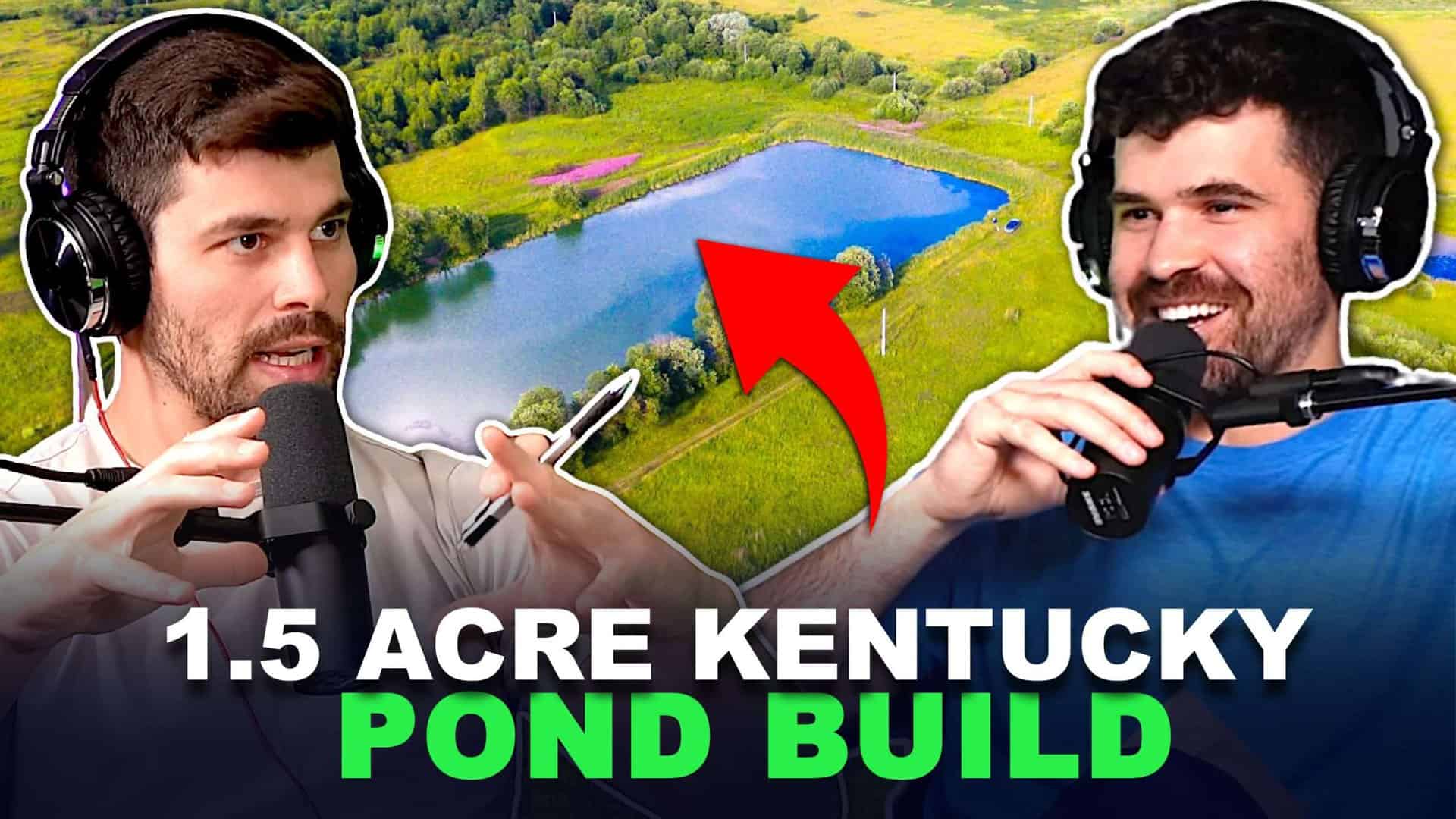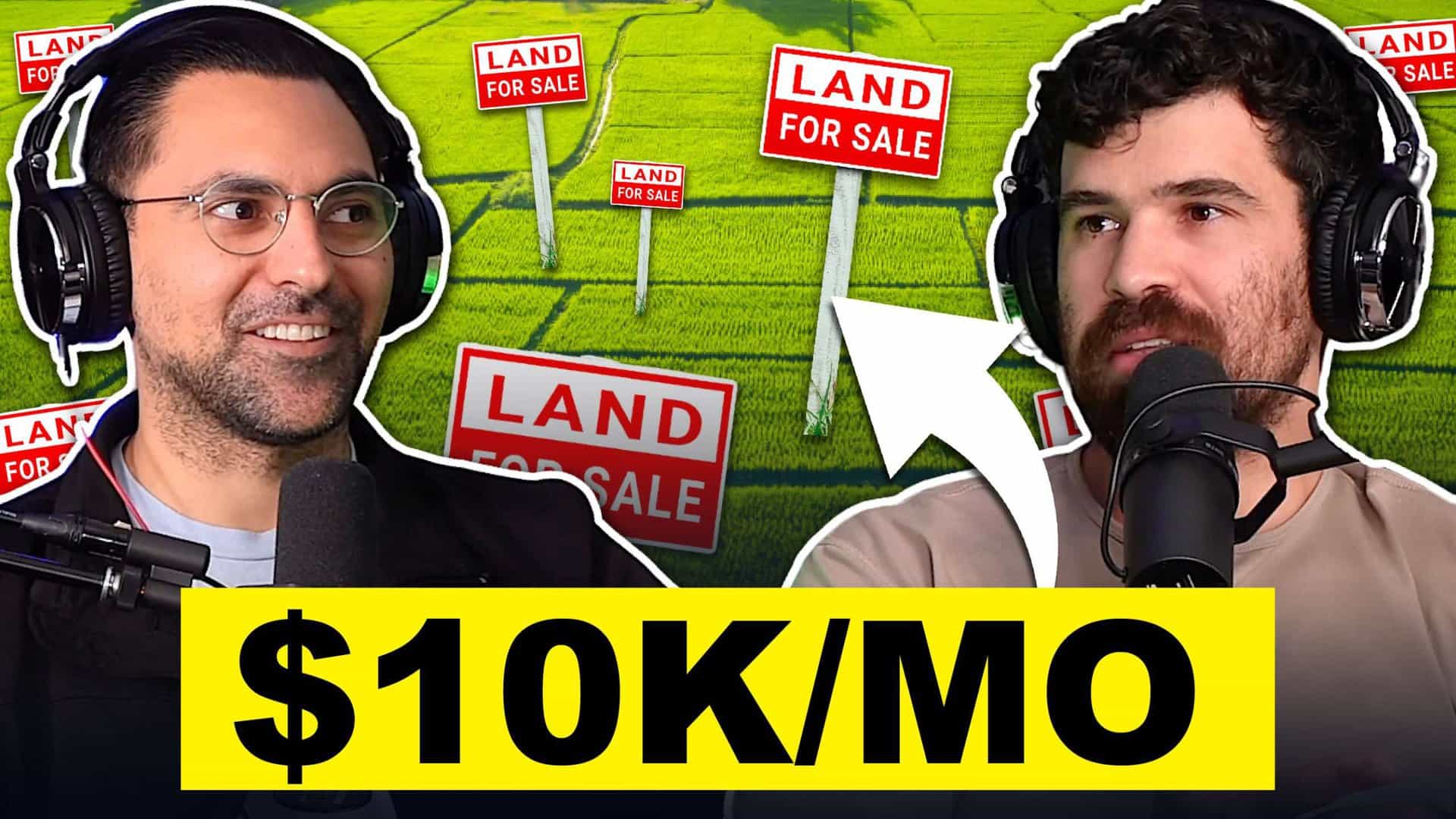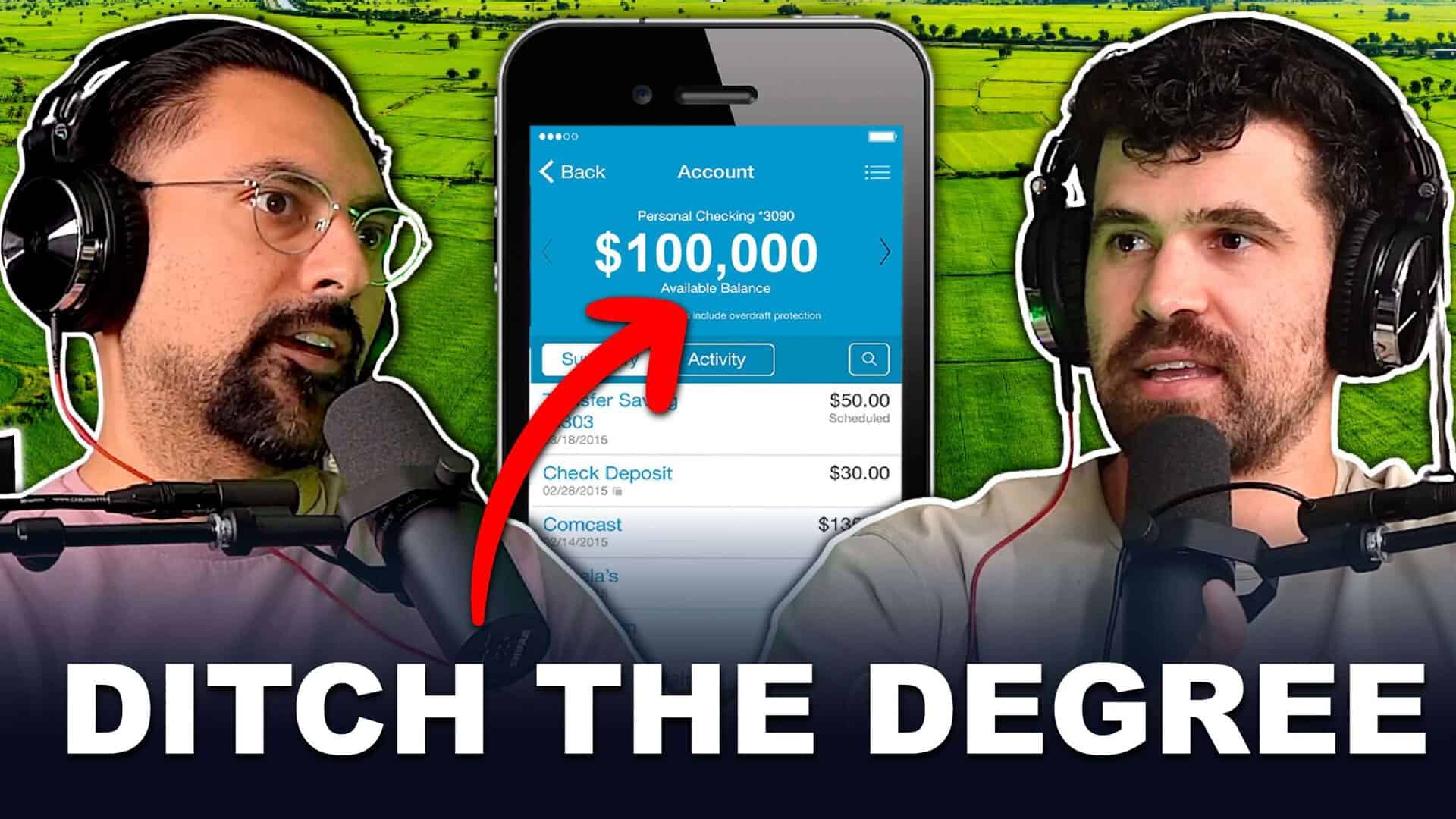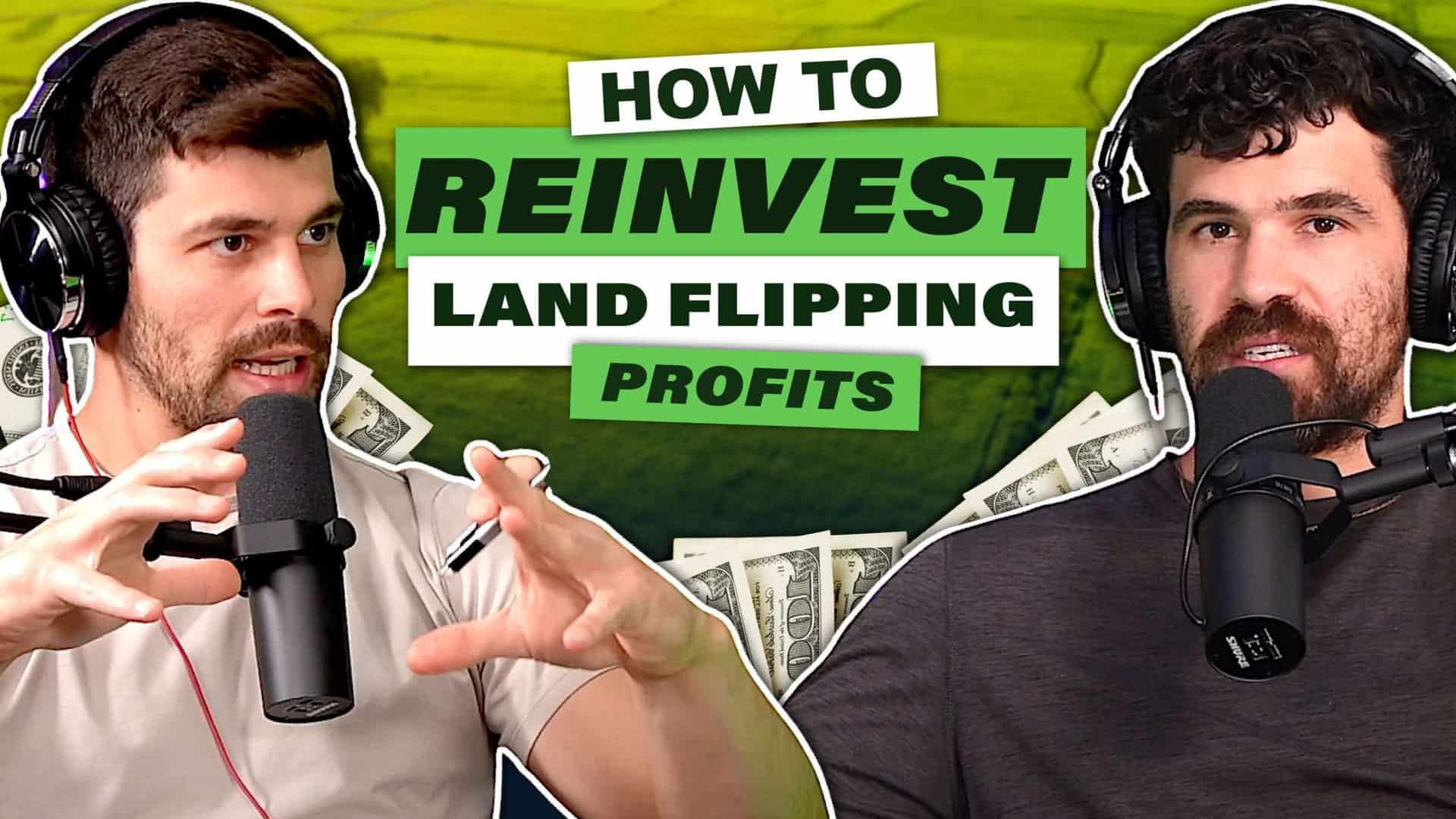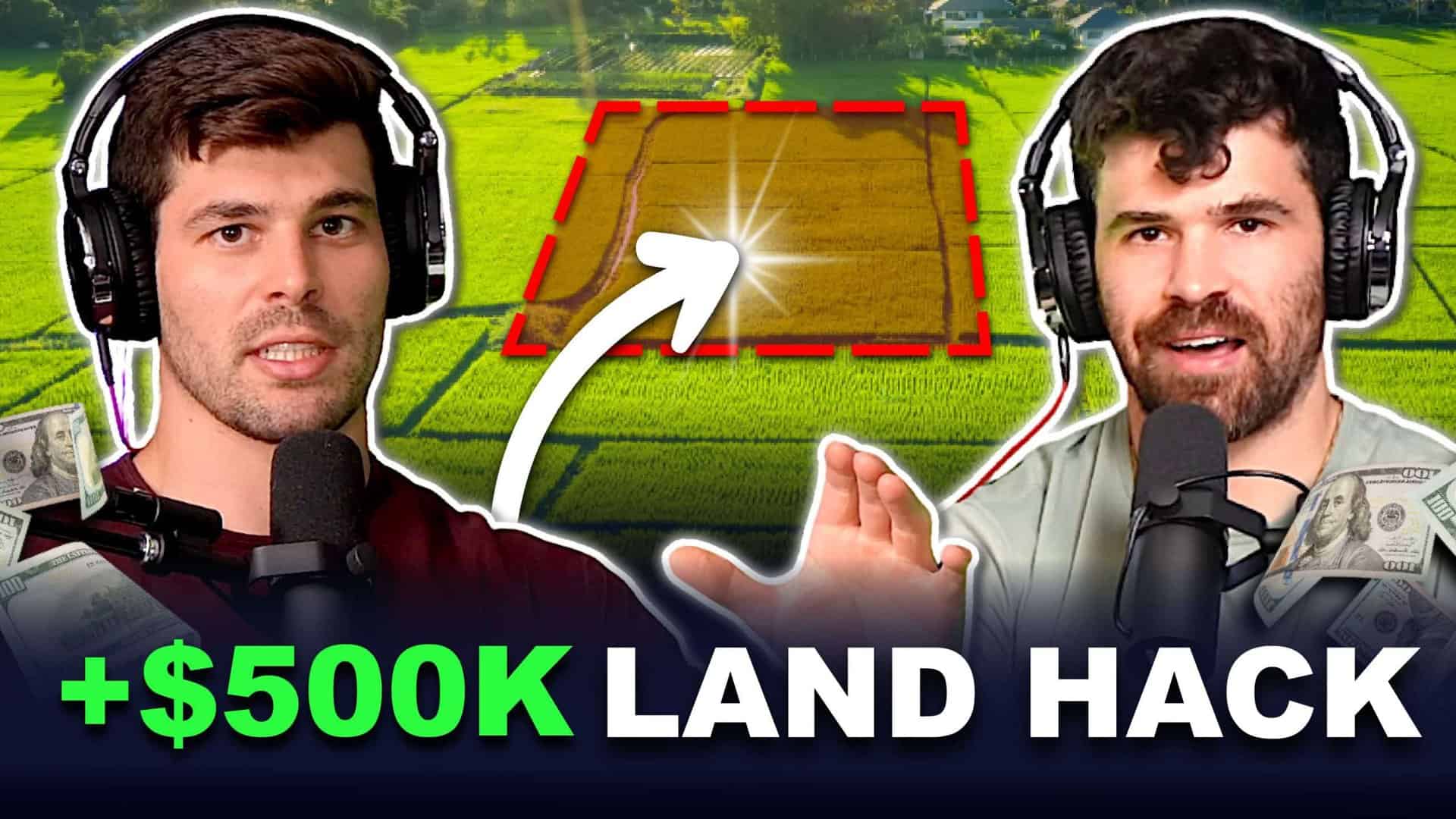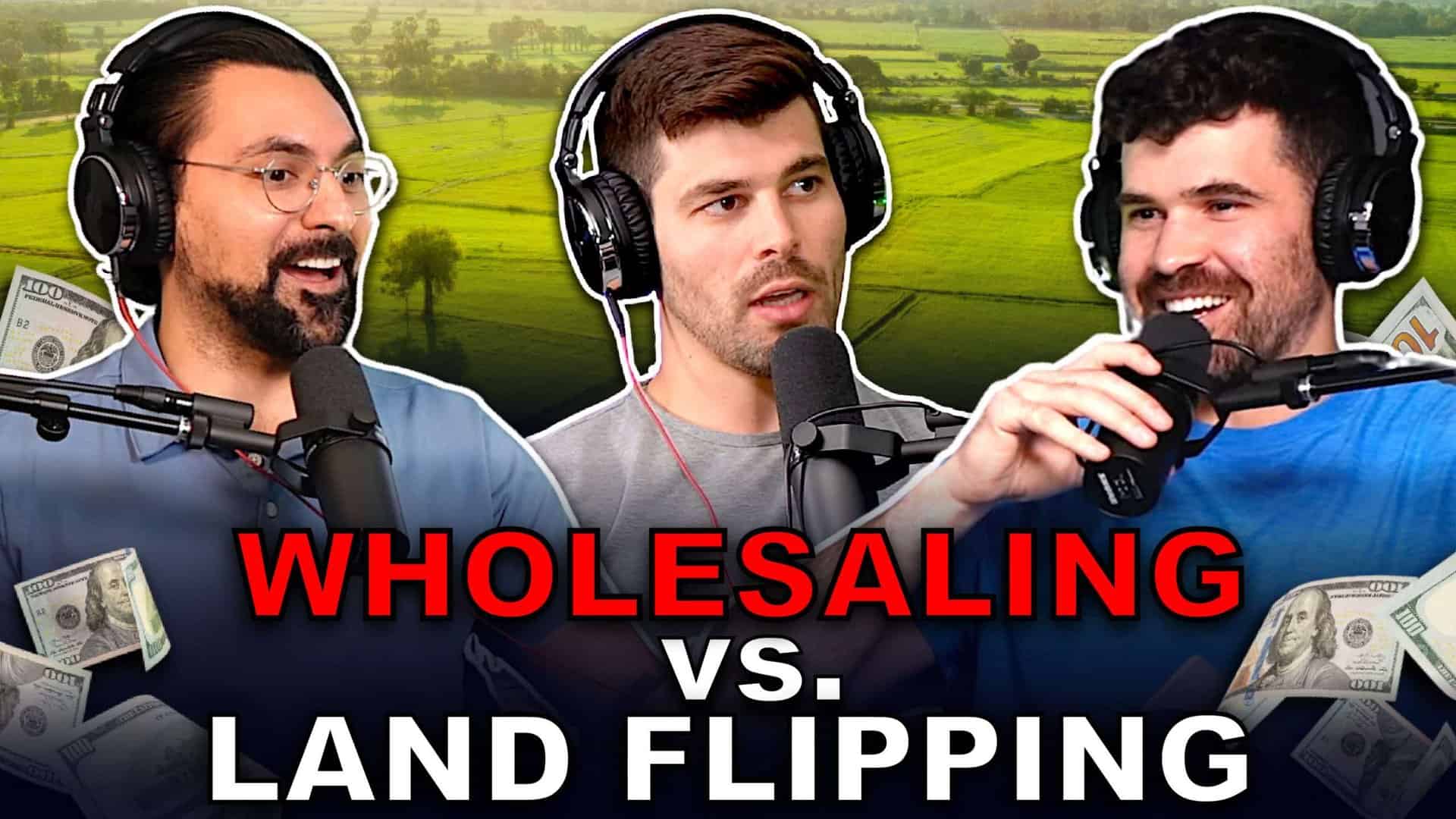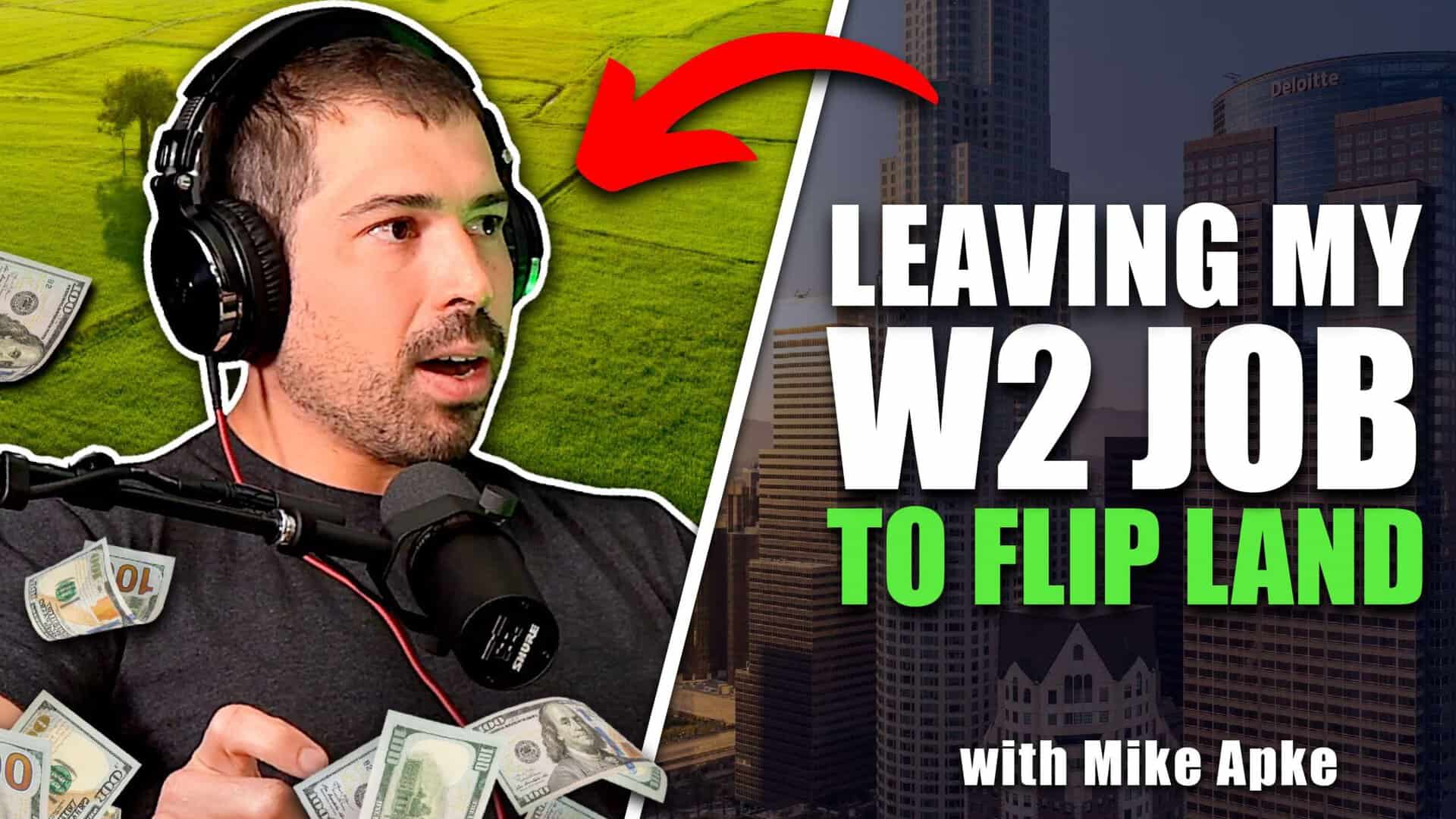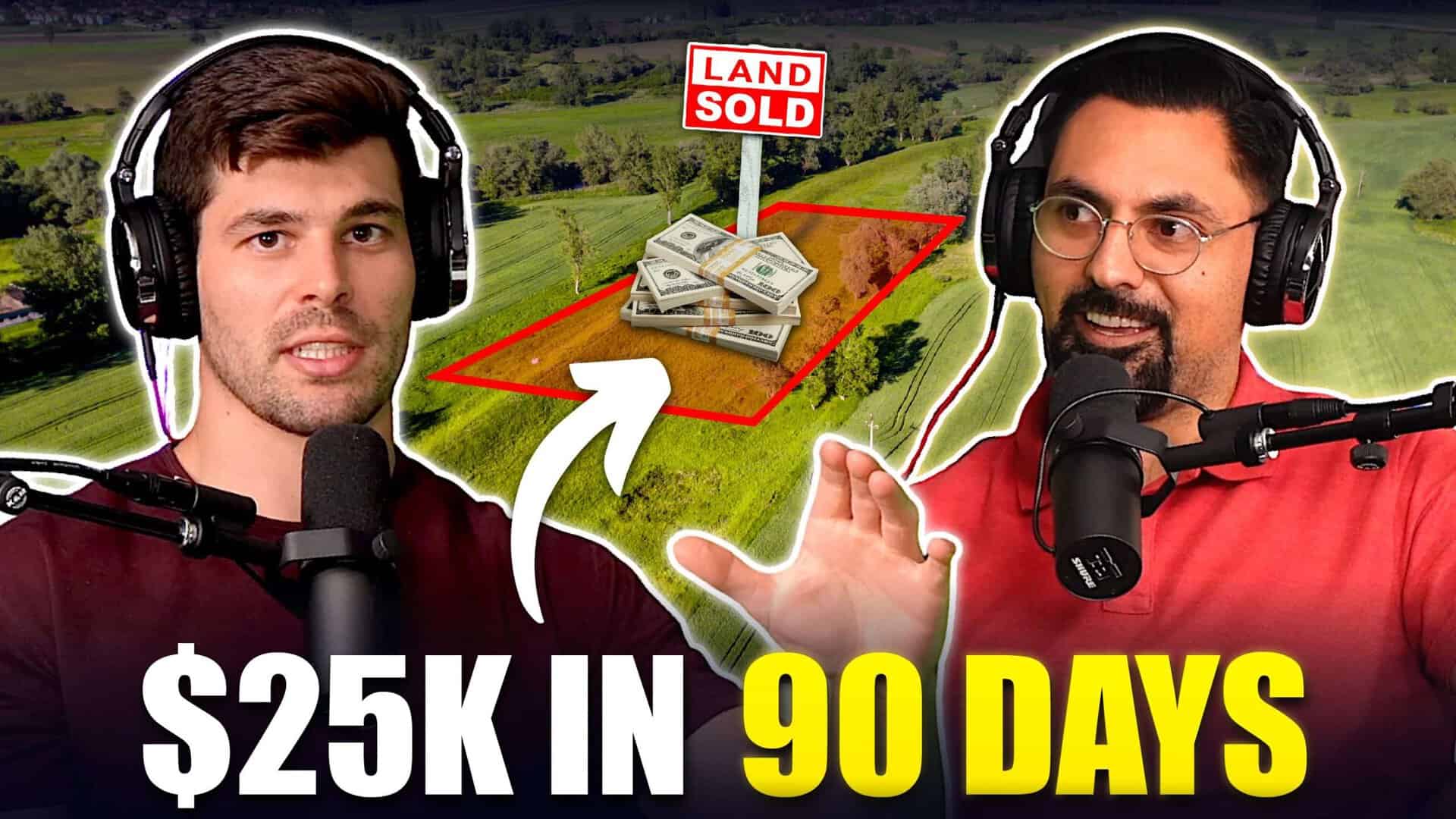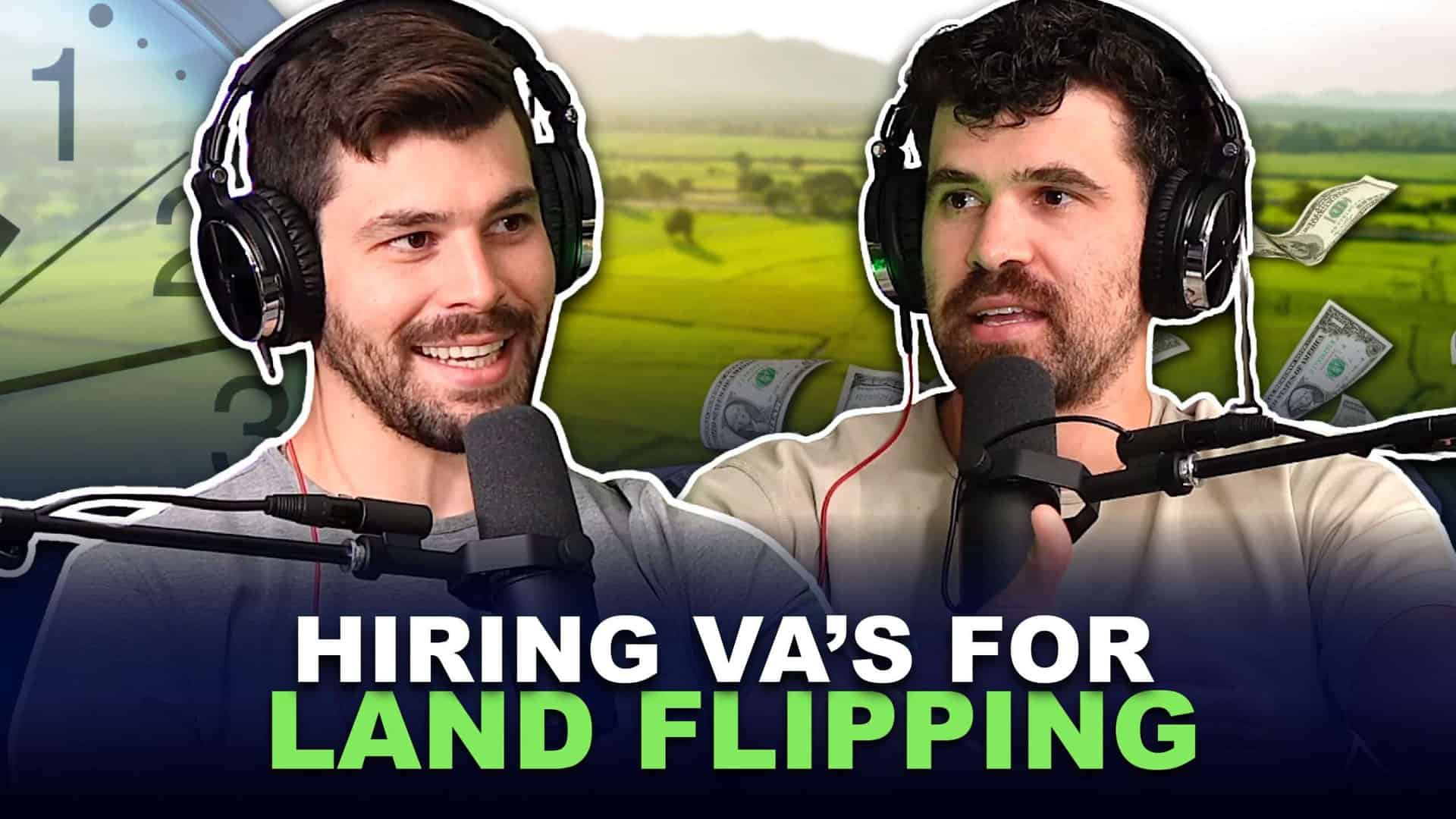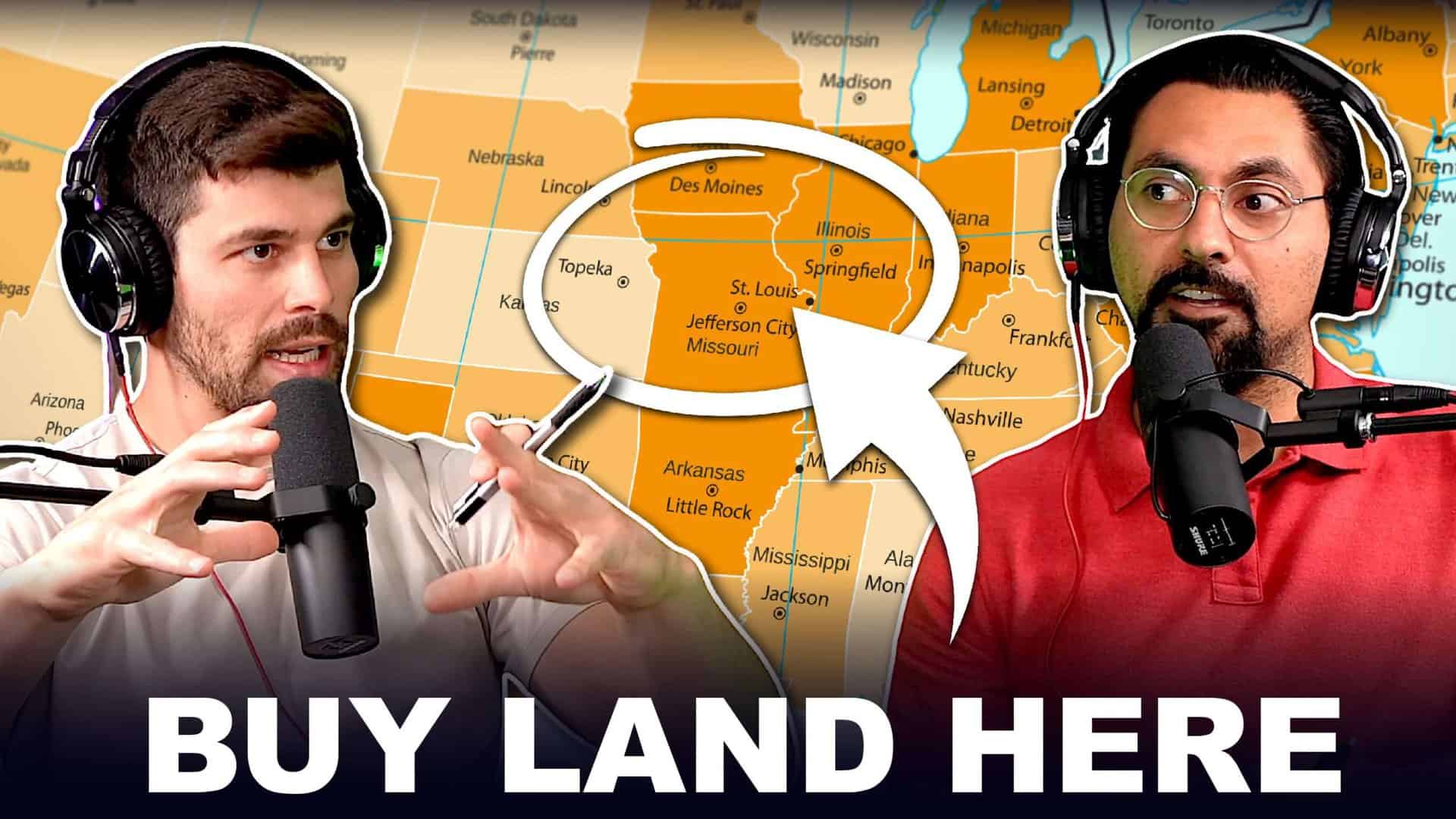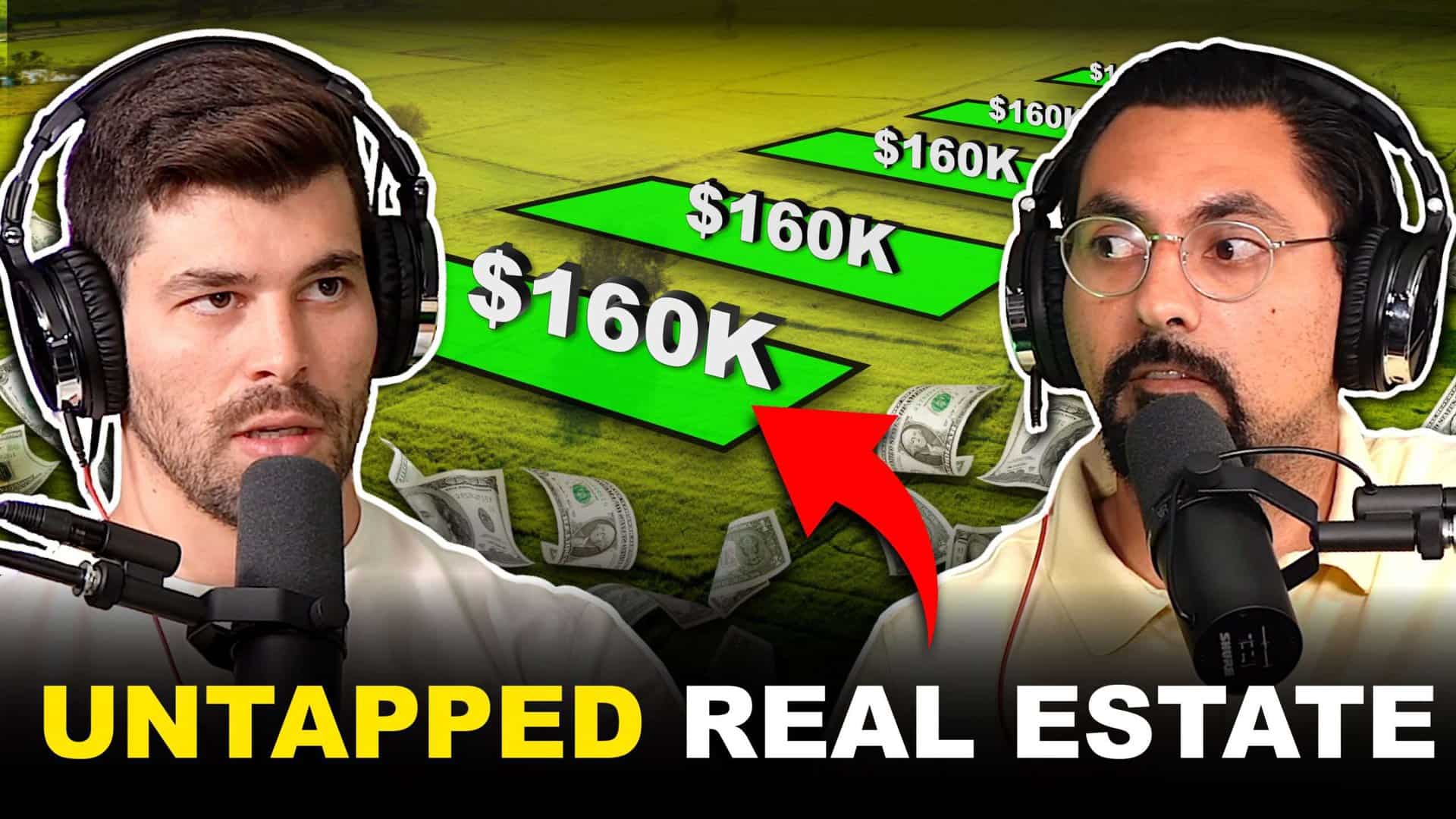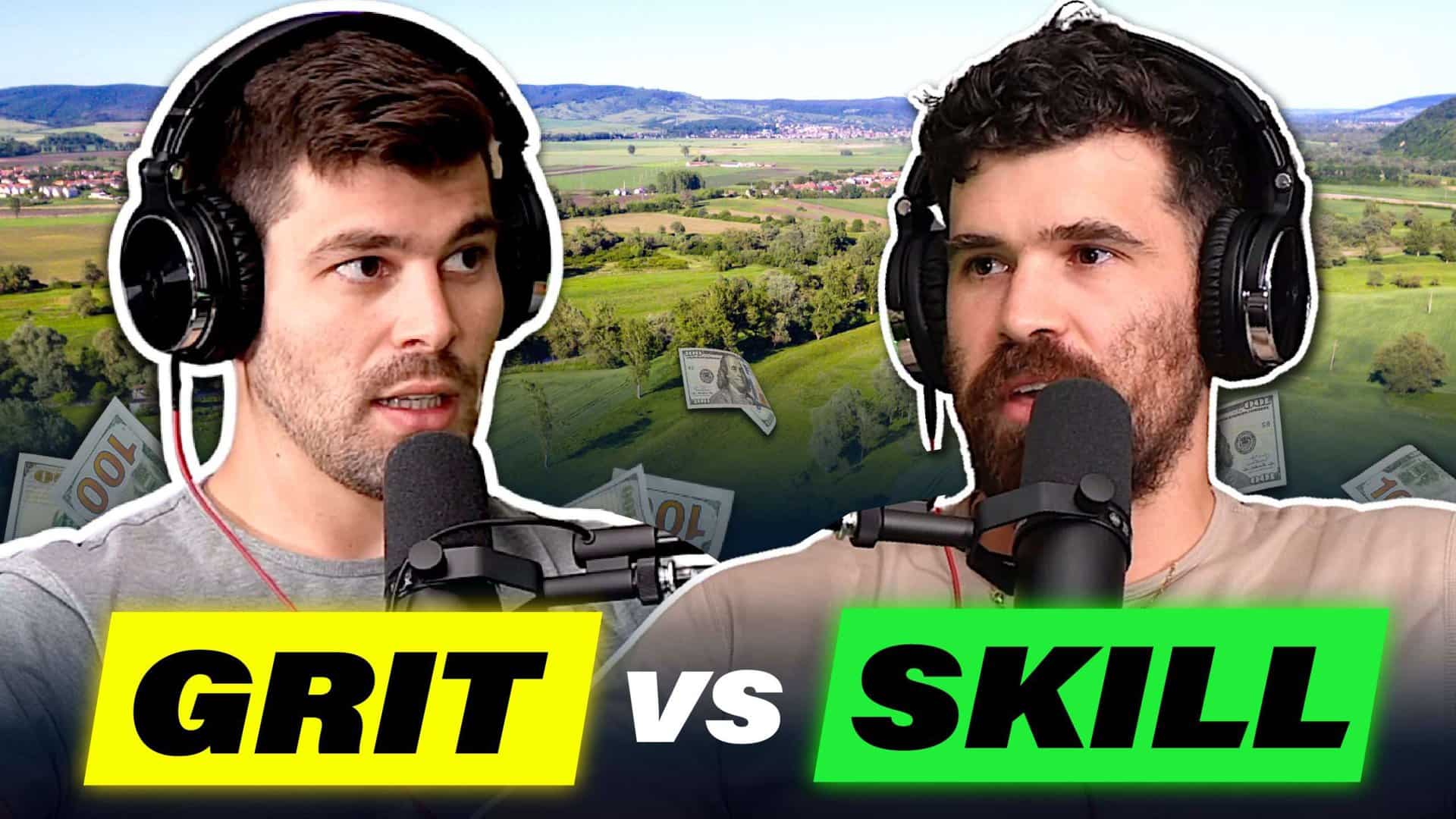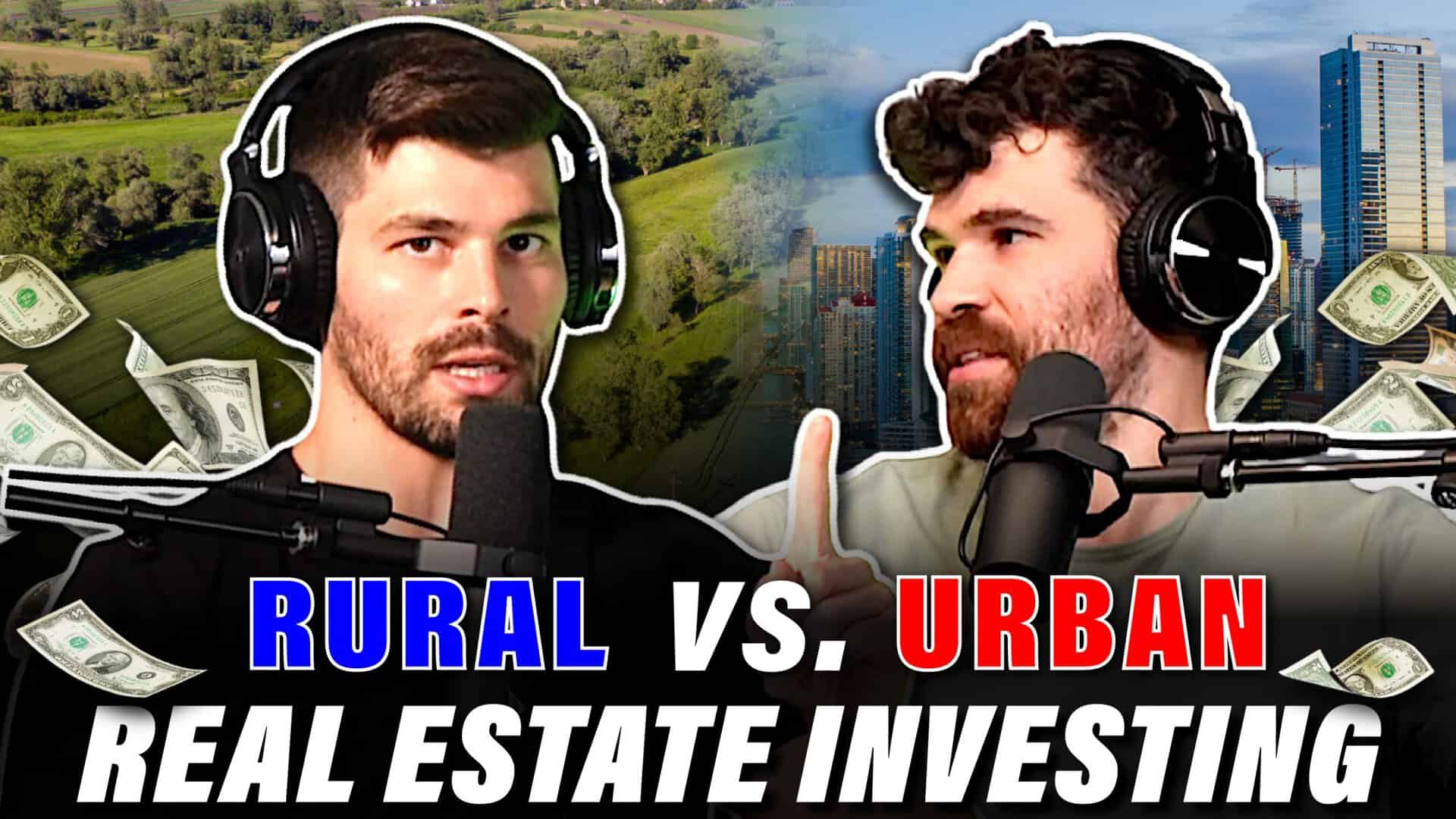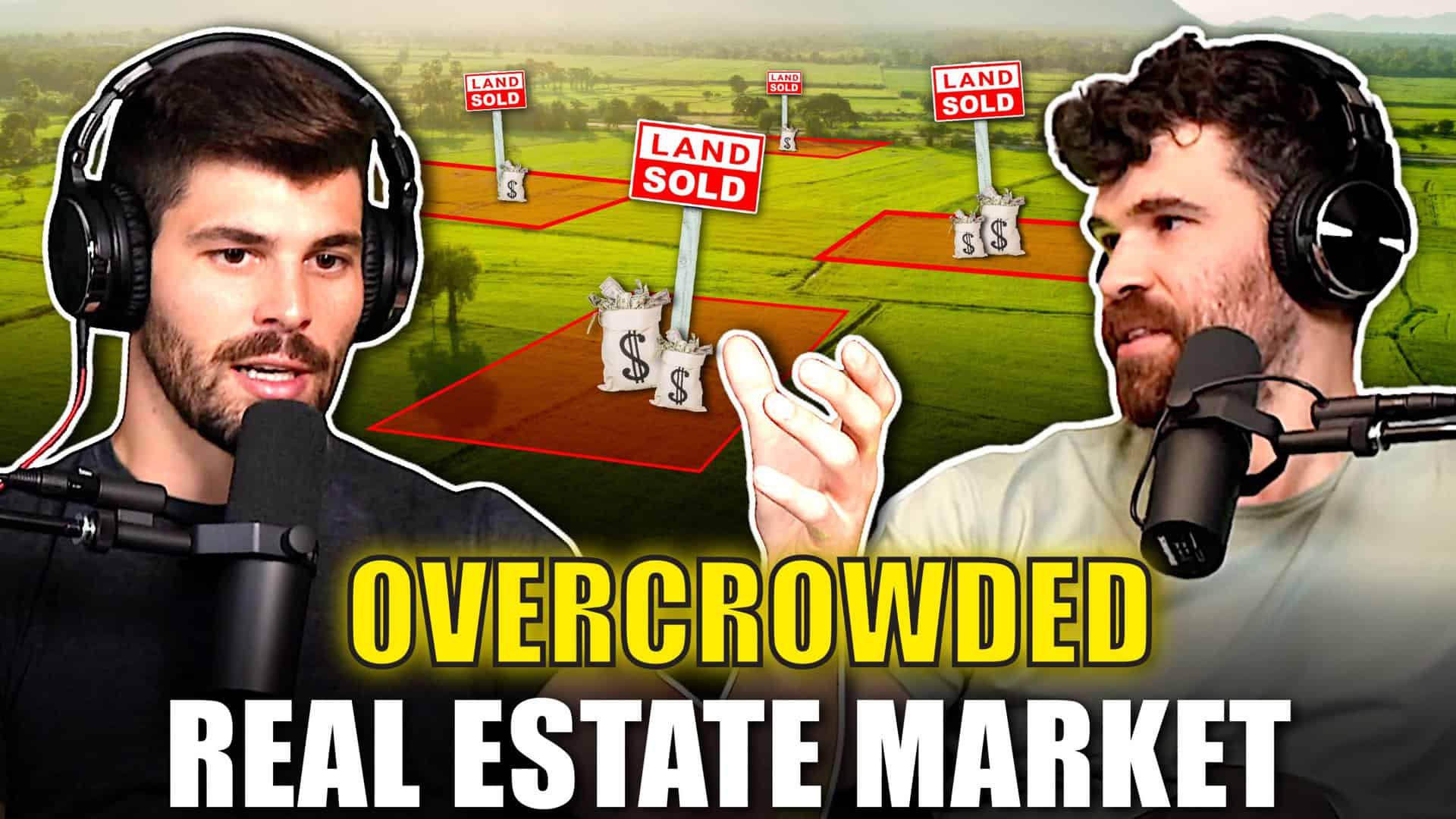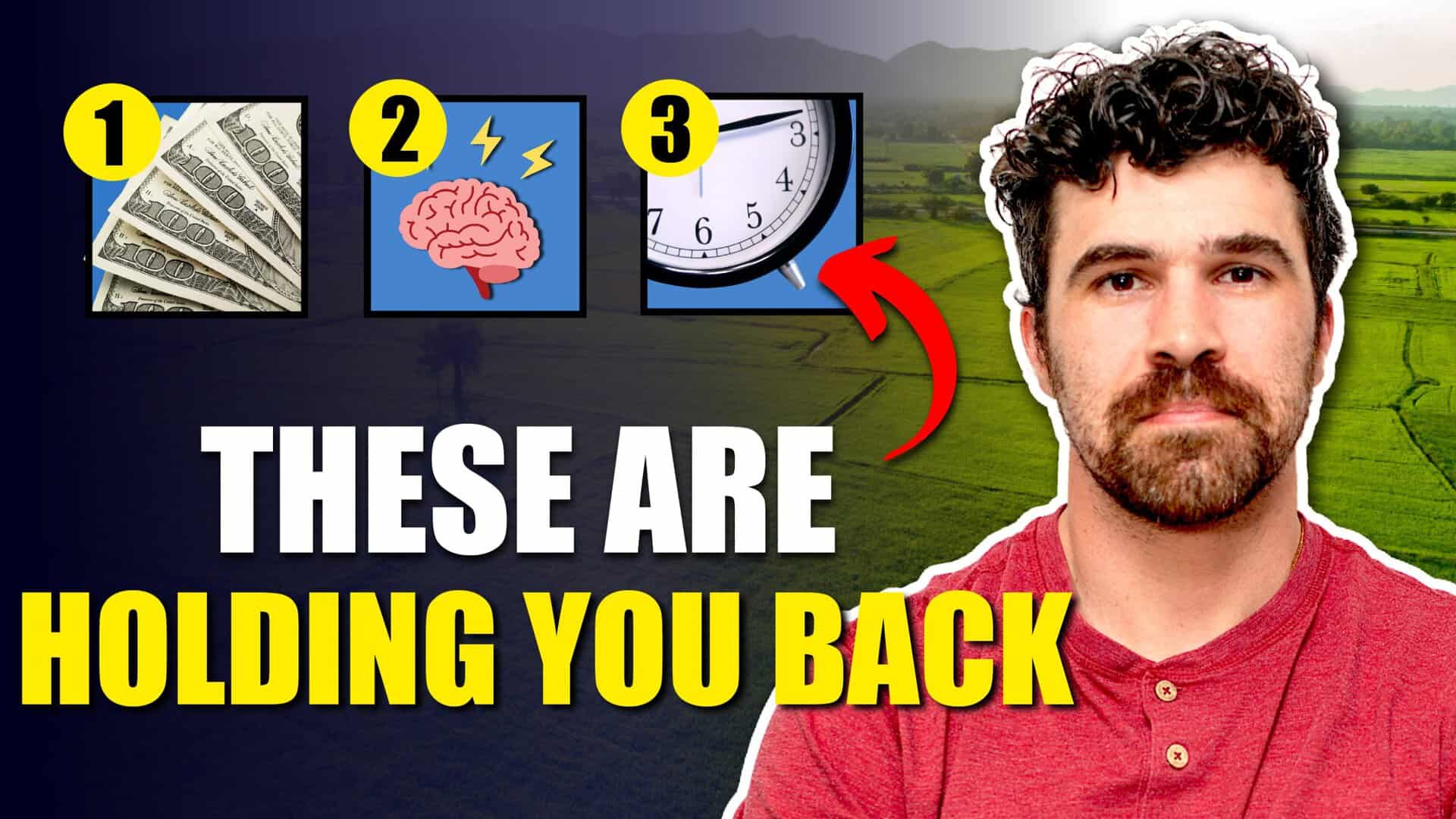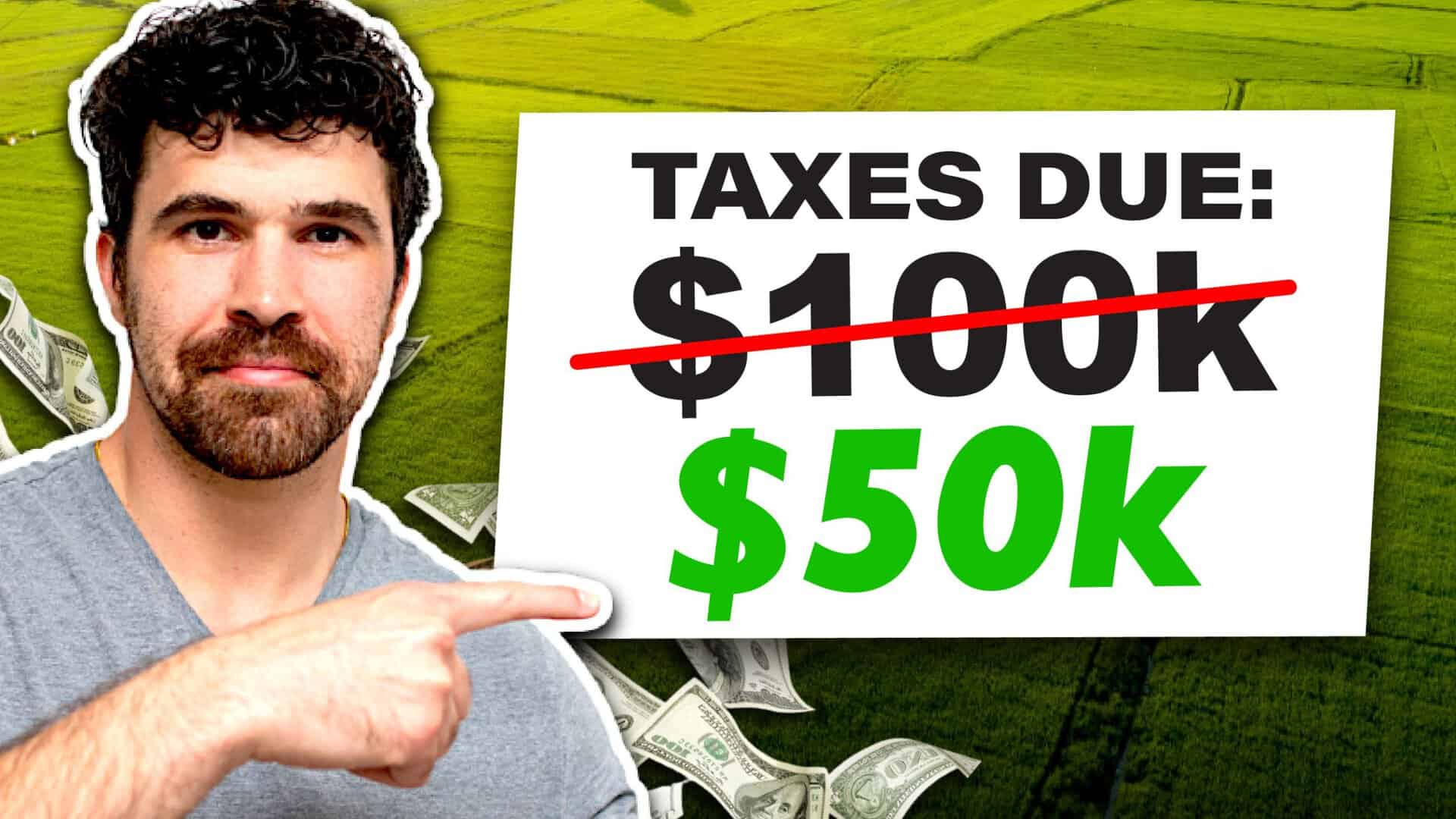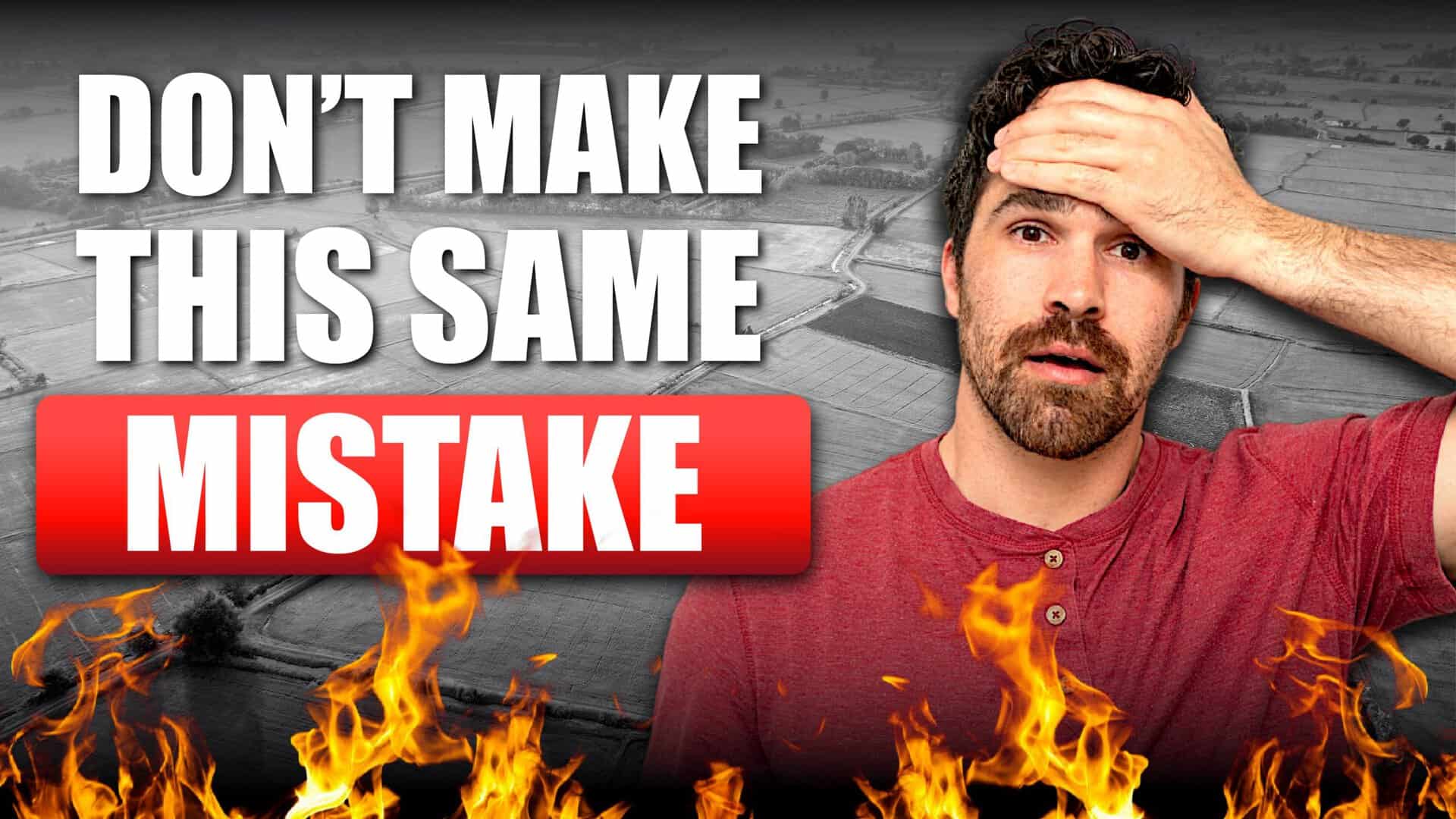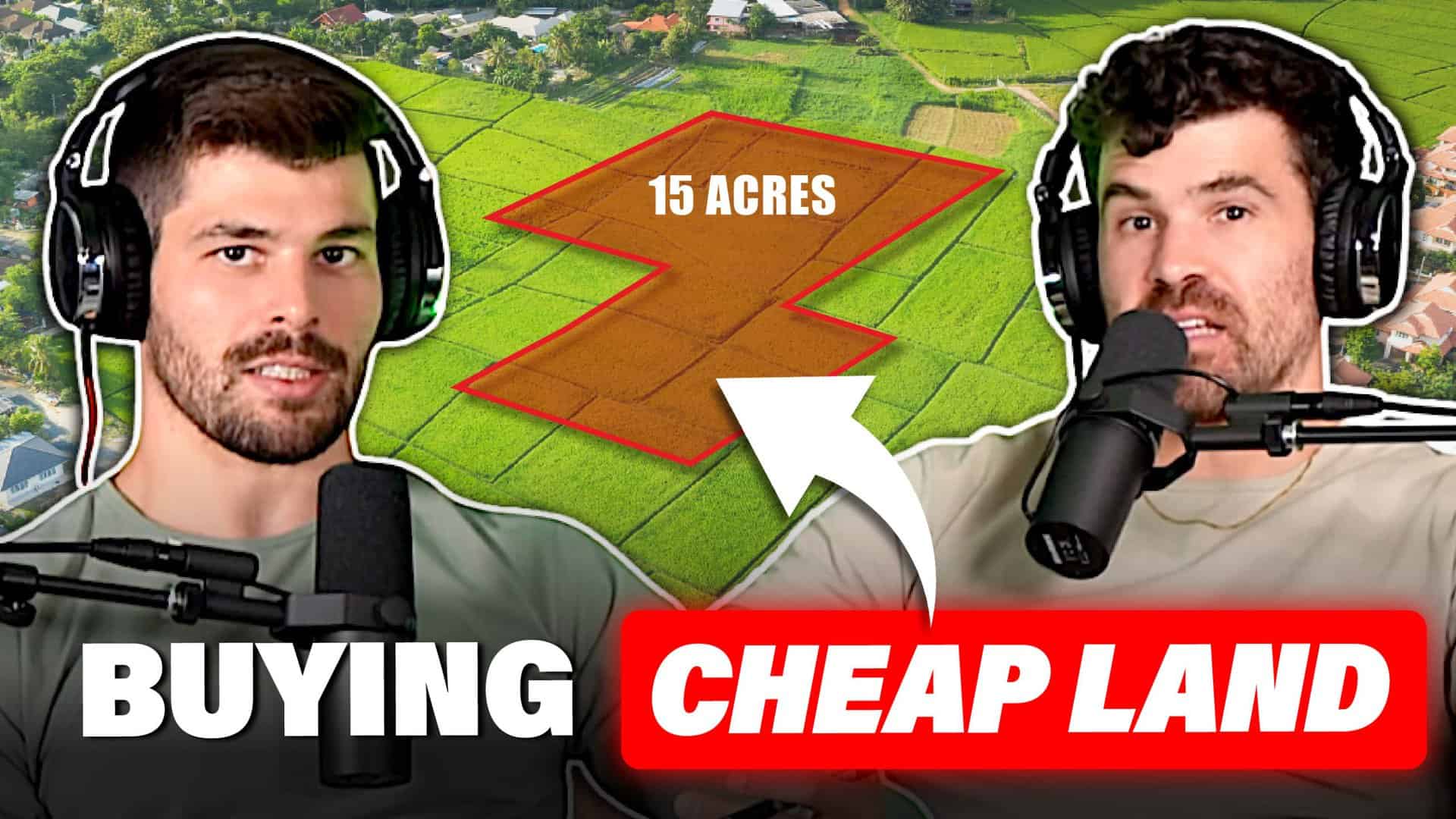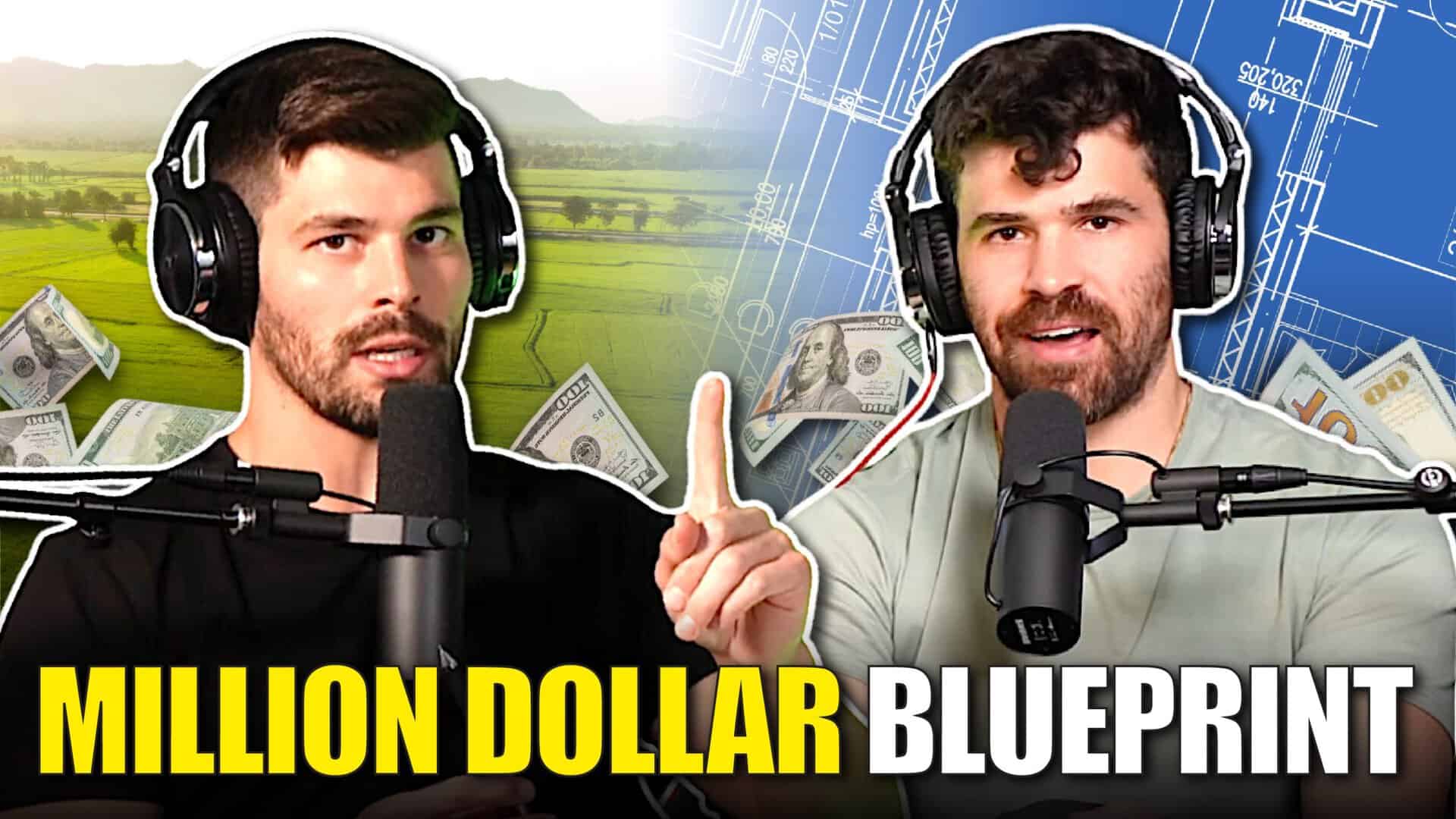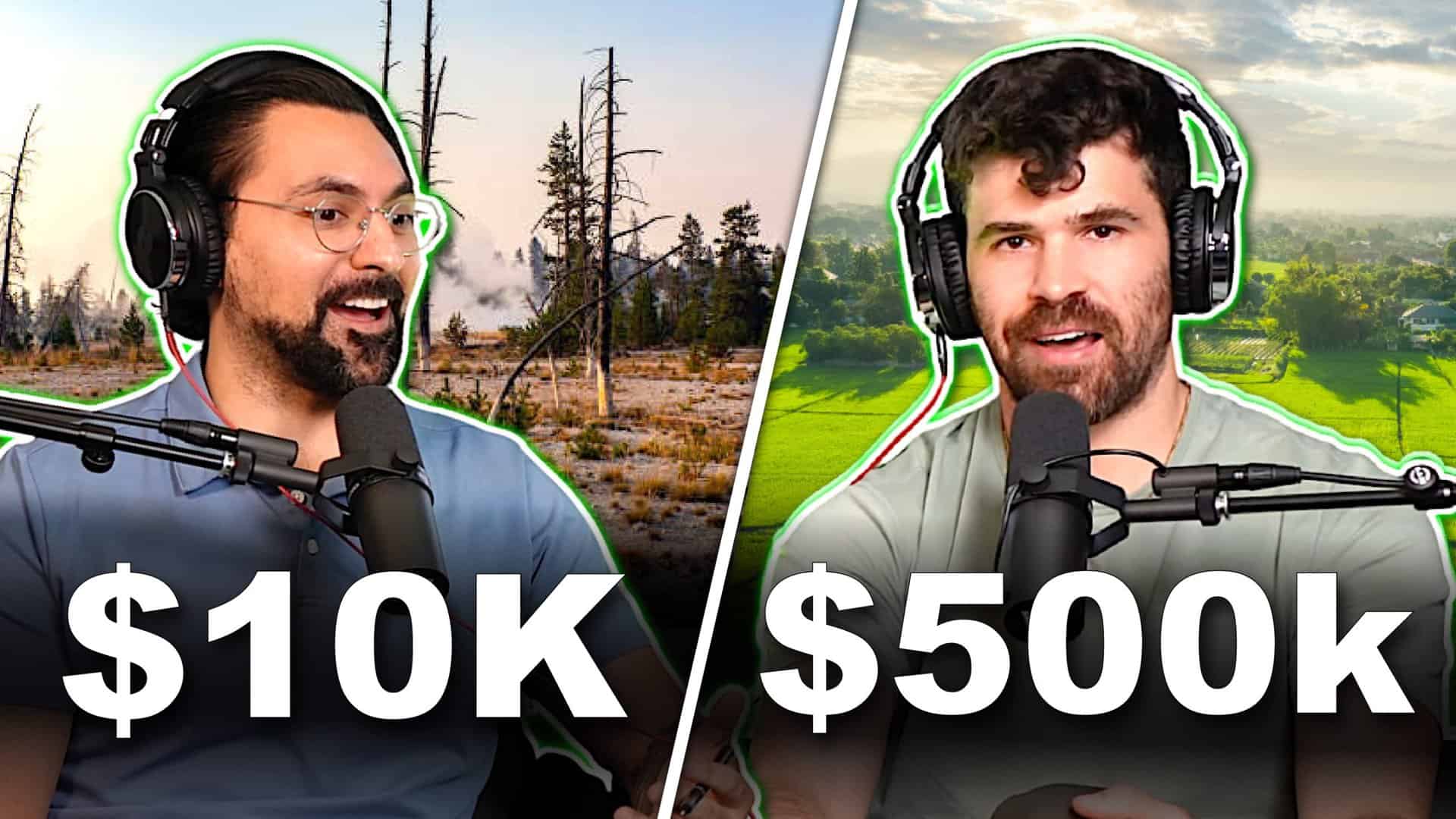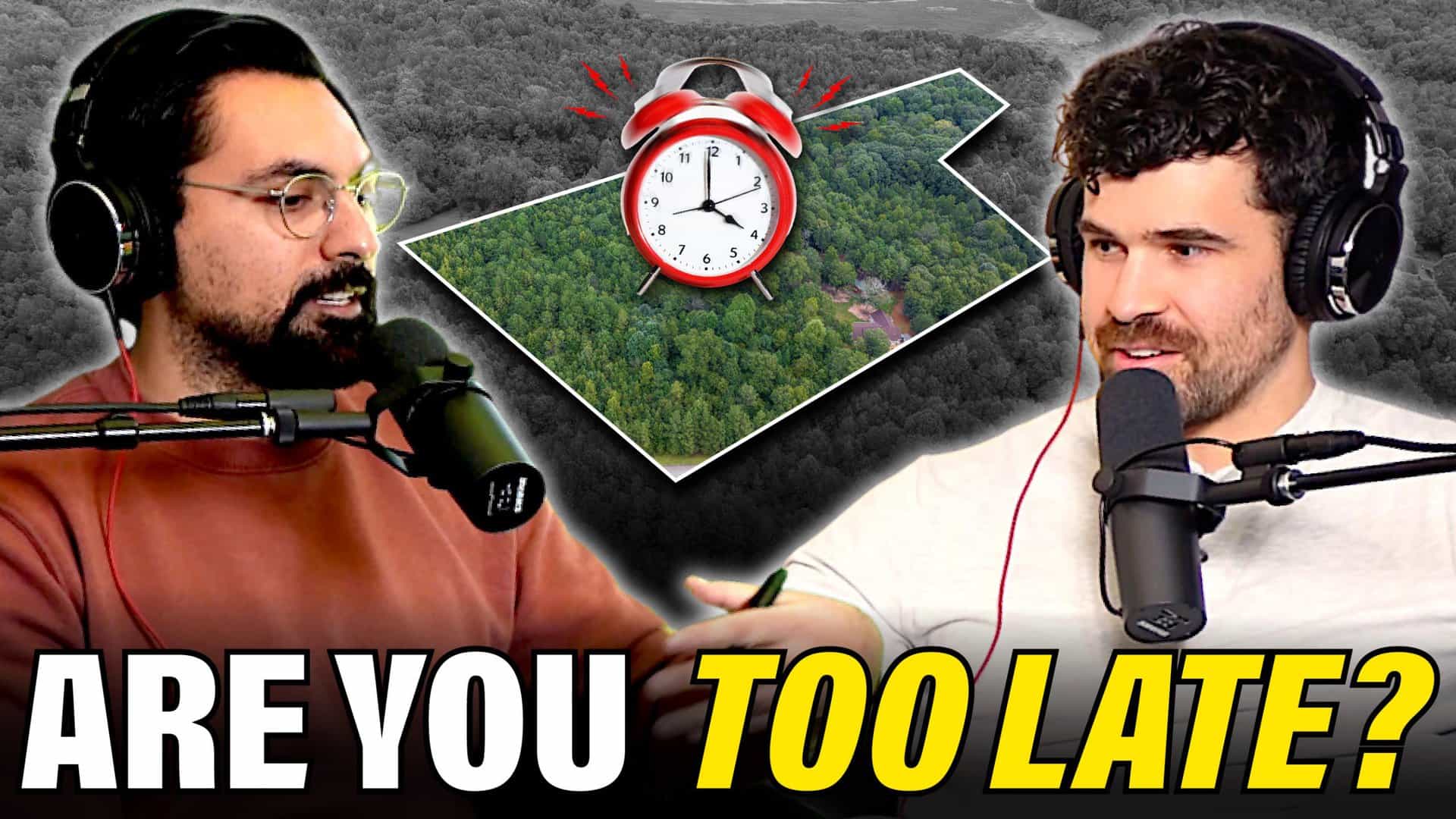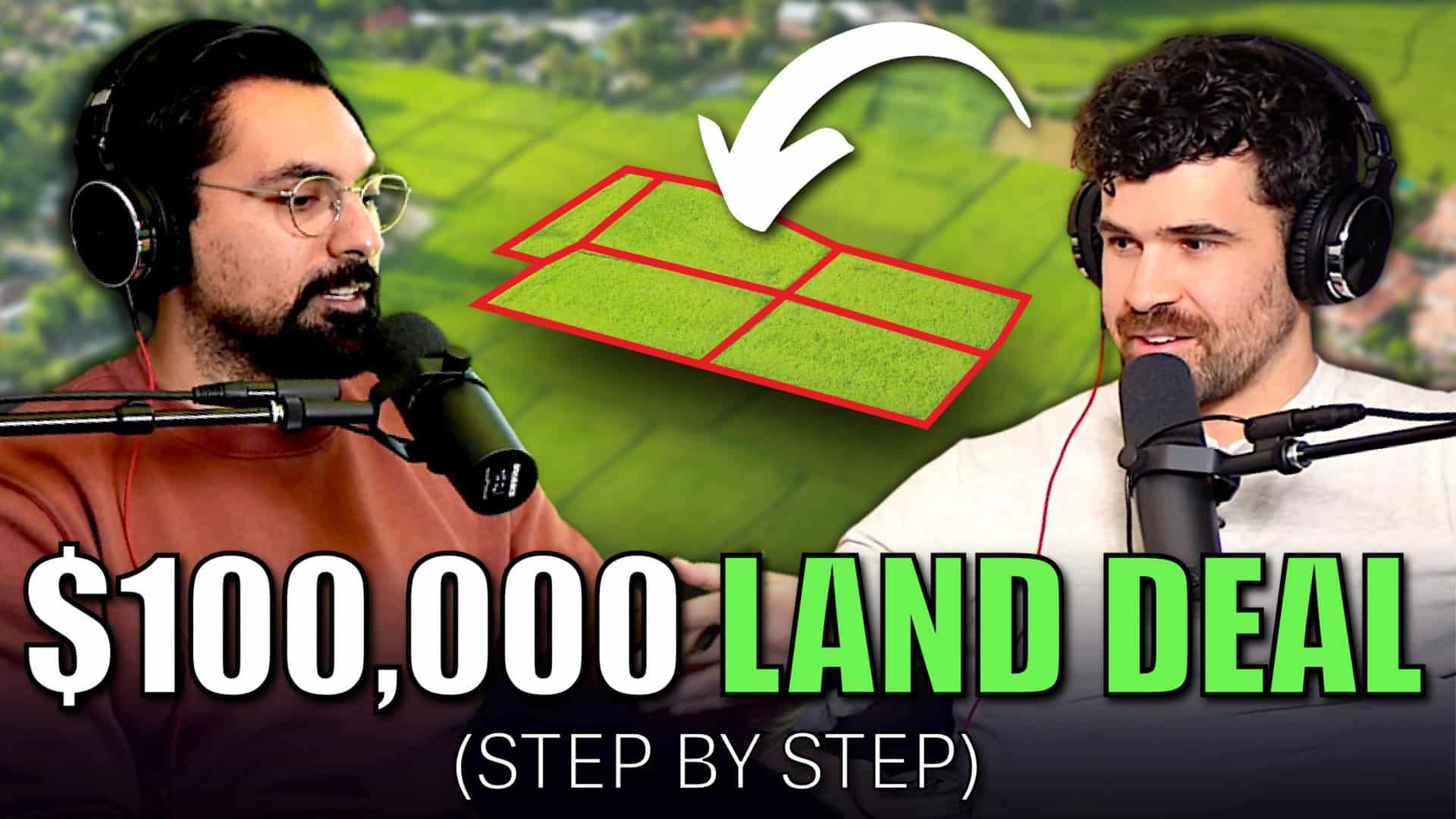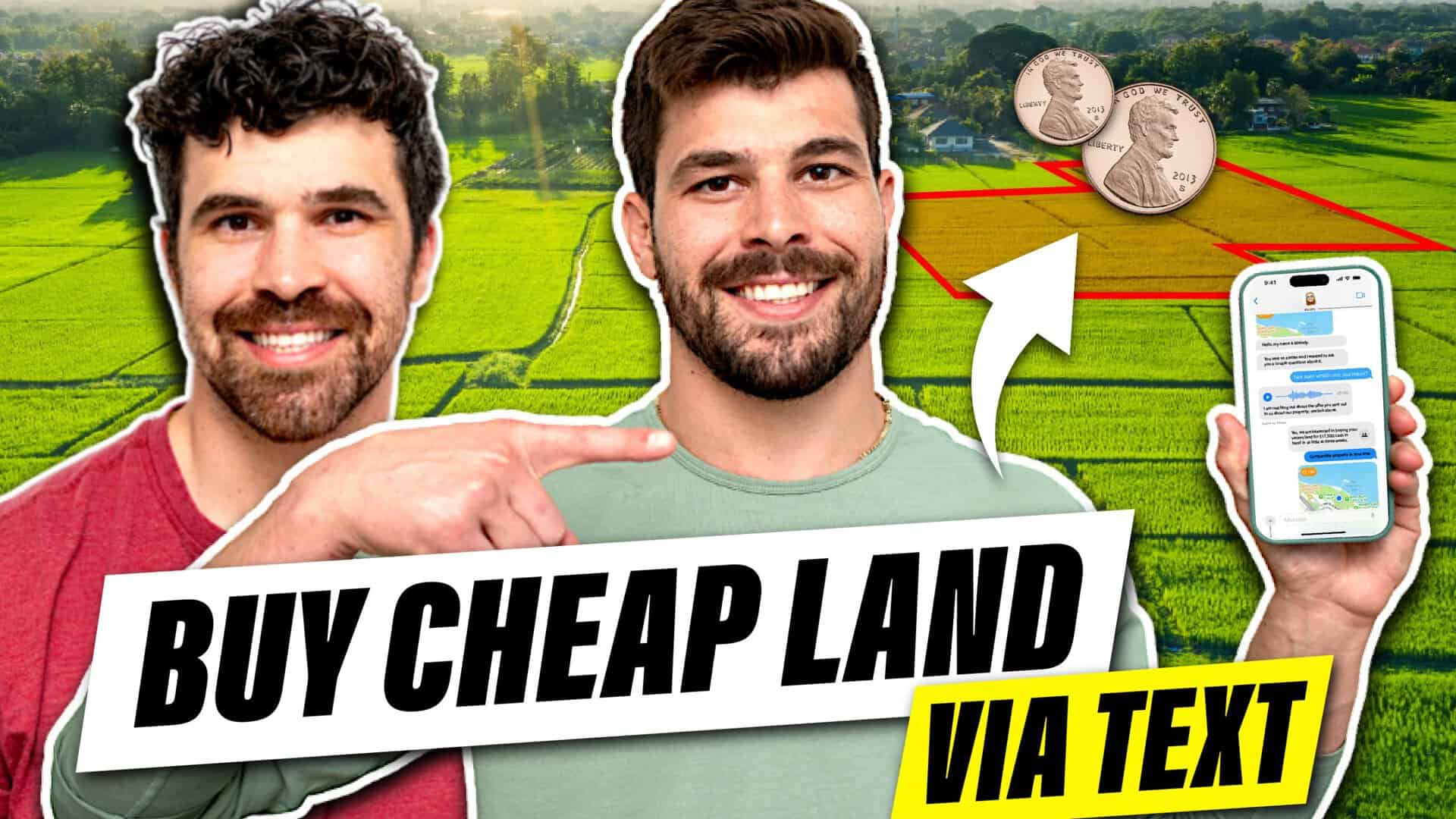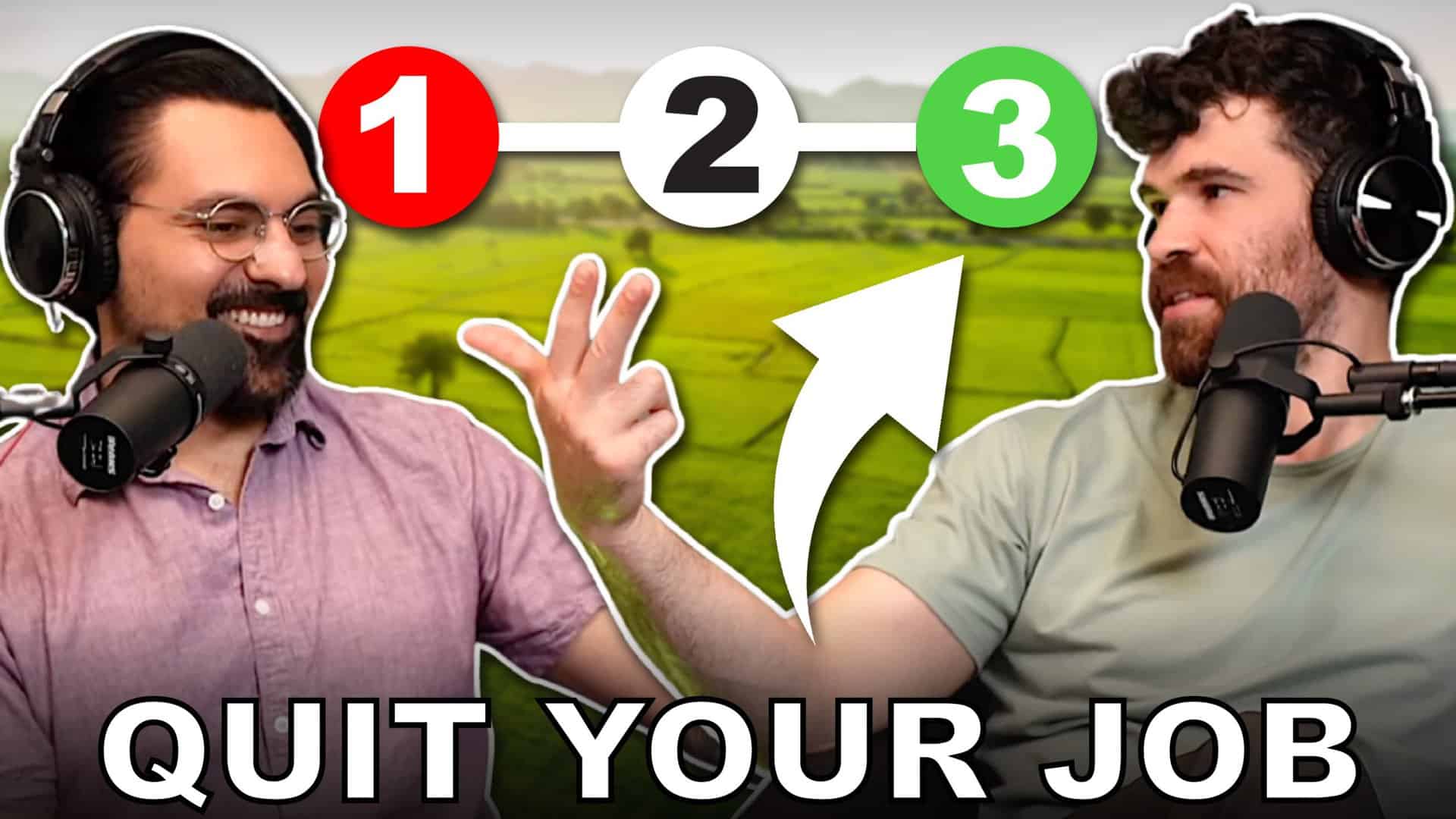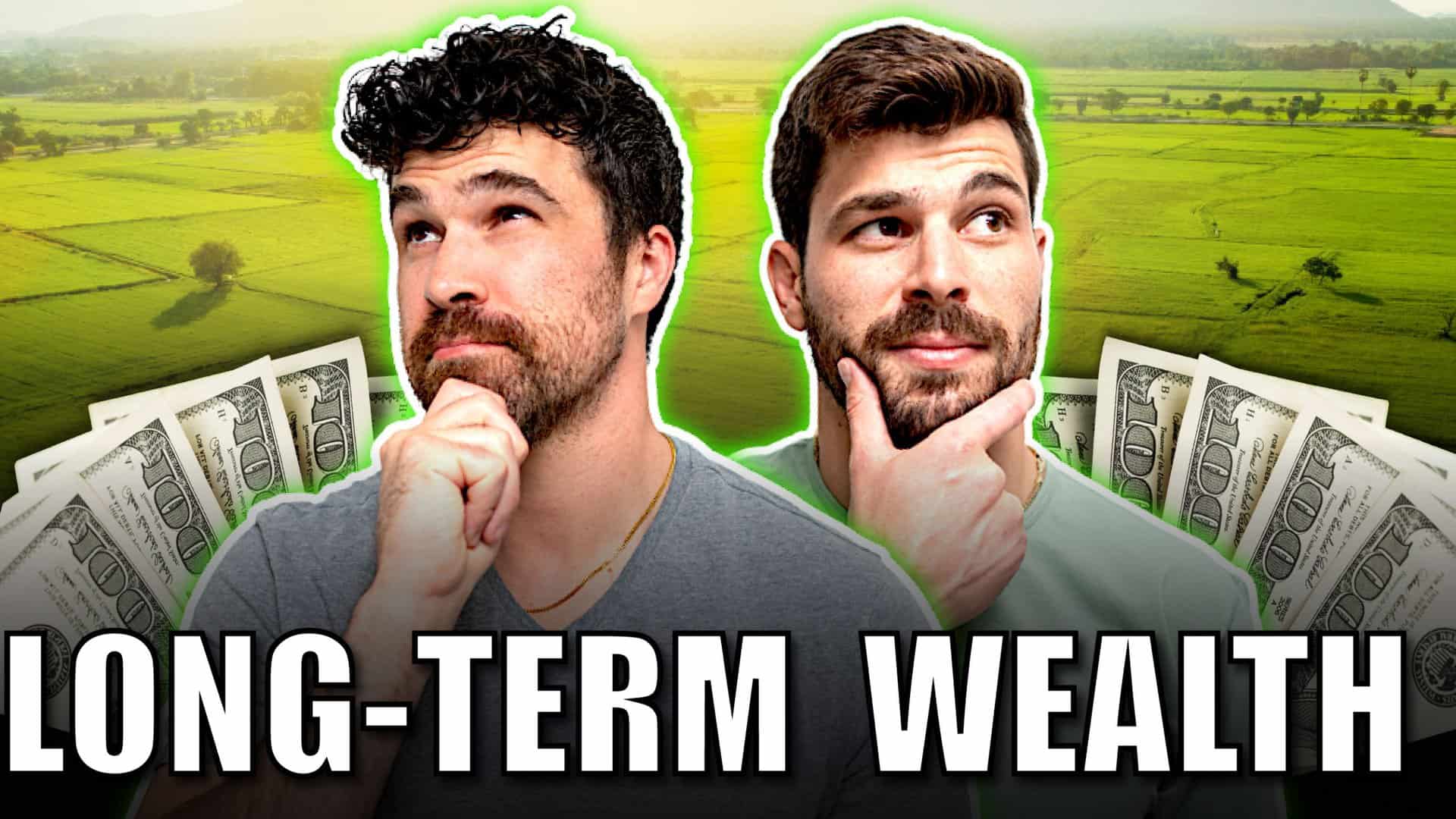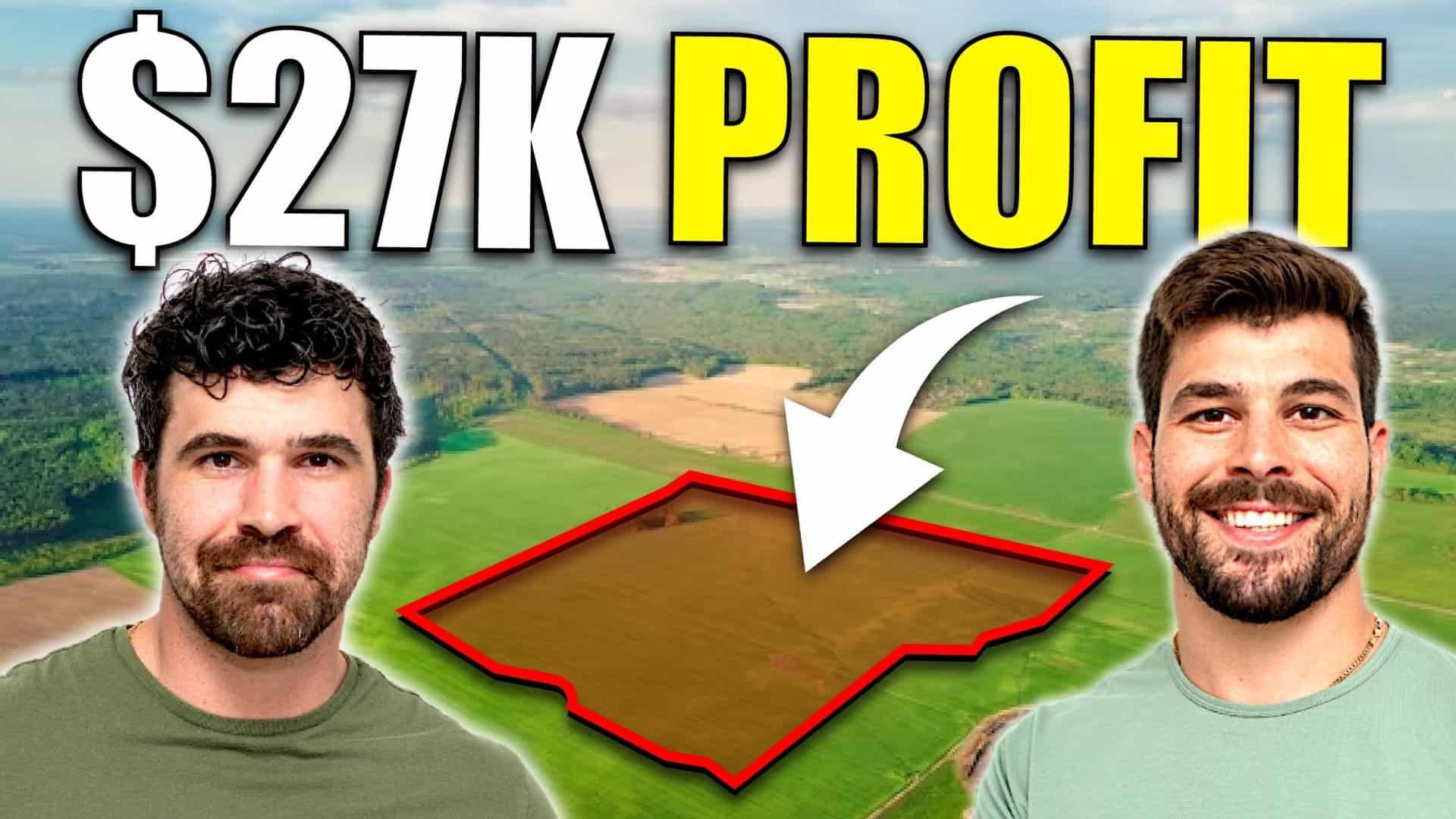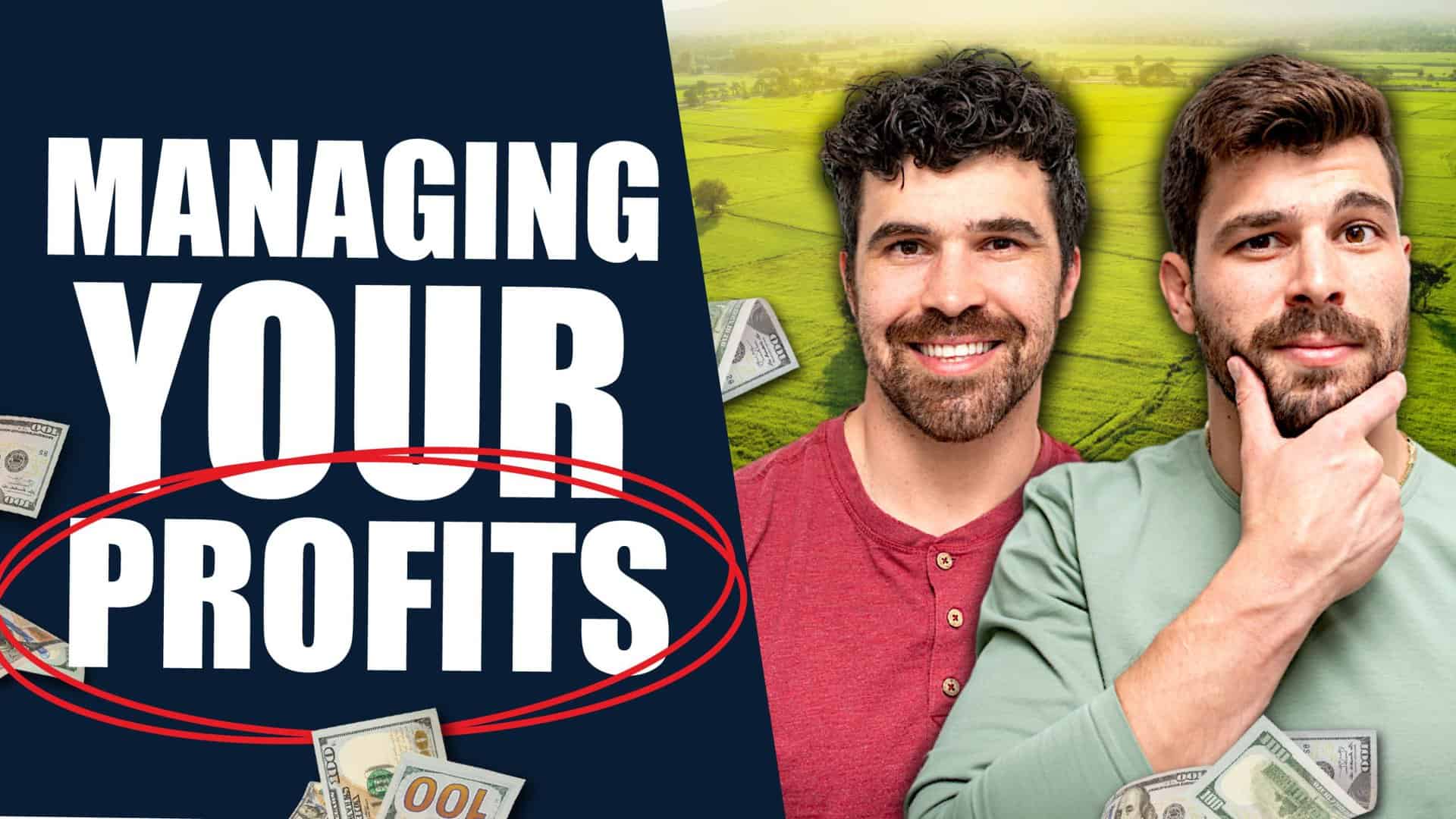Building the Ultimate Data Tool for Land Investors: Inside The Land Portal
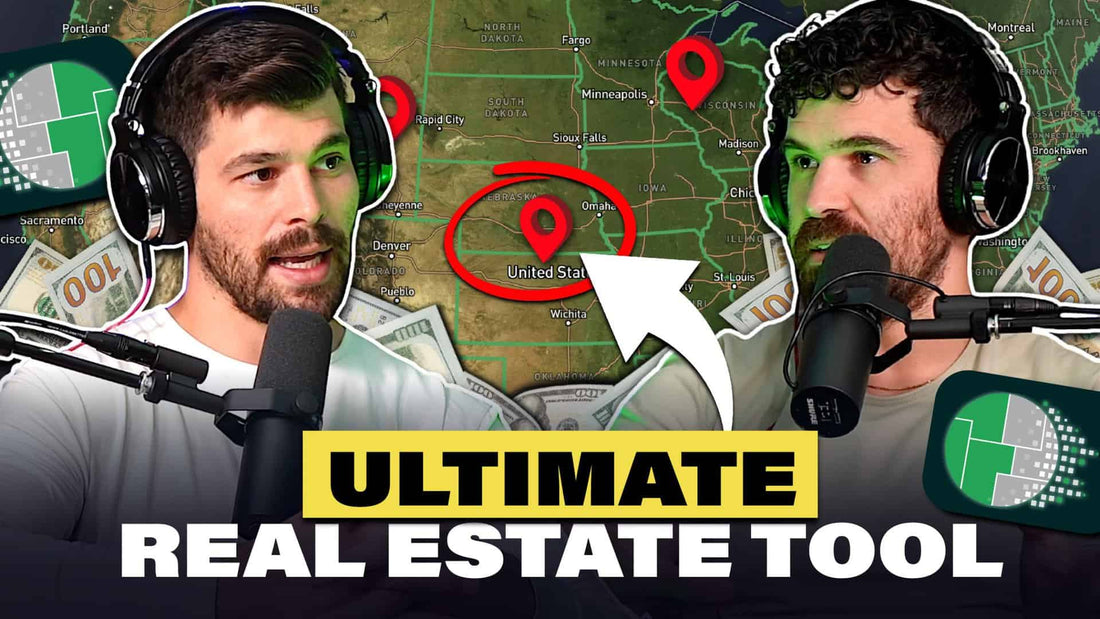
Featured
Choosing the RIGHT Land Flipping Business Partner
$10K vs. $500K Land Flipping Purchases: What’s the Real Difference?
Leaving 9-5 Job After 4 Months of Land Flipping w/ Dylan Rusch
Land Flipping 2028: Future Trends You Should Know About
How to Get Started In Real Estate Investing With No Money
Building the Ultimate Data Tool for Land Investors: Inside The Land Portal
" target="_blank" rel="noopener">

Join our free Discord channel!
Engage & network with thousands of new and experienced investors, participate in weekly deal reviews, and more!
JOIN
In this podcast episode, Daniel and Ron Apke dive into the development of their software, The Land Portal, created to address the challenges they faced in land investing.
They highlight how the tool reduces friction for users by offering advanced filters, such as targeting properties with road frontage or eliminating landlocked areas, features unavailable in other platforms. They reveal the software's growth since its beta release, emphasizing how it helps land investors save time, avoid bad deals, and increase efficiency.
The episode also covers how user feedback shapes the platform's continuous updates and improvements. By integrating AI and proprietary data sources, The Land Portal offers unique capabilities, like removing properties with structures or wetlands before users even pay for data.
This focus on precision and user needs has driven The Land Portal's rapid growth, making it a powerful tool for land investors seeking efficiency and better deal outcomes.
CLICK HERE to get a 14 day free trial to The Land Portal!
⬇️ Listen or watch the full episode below to get an inside look into how The Land Portal was created, the power behind it and how it's reshaping how investors are managing their real estate deals! ?
Listen to the Latest Podcast
View Transcript here
Dan: Hey everyone. Welcome back to the real estate investing podcast. Today’s topic. We’re talking about building and scaling the land portal, where we’re going, our purpose for building at different updates, what we’re seeing from the community, what kind of deals people are getting. We’re going to talk all things to the land portal here.It’s been a while since we gave everyone an update on this run.
Ron: Yeah. Excited to get into this. I know. You and the developers have been working hard, uh, and I think it shows in the quality of kind of the improvements over the last, I mean, it’s crazy looking back, like, we started this thing, we did our beta in, like, March, which was insanely far behind where we are today, and we probably started creating it, like, a year ago.
Do you know when we started creating it? Building it a year. Probably can’t be much more than a year. Uh, it was more than a year, but yeah Yeah But um, just just how far it’s come and the reason and the value it’s bringing the best thing about this and why it does Well, uh is because the value it brings to land investors to people who are looking to do land deals And there’s so many house people that are coming in now.
Dan: It’s wild because we barely do any marketing the way this business We i’ve never had a business explode like the land portals exploding period like the way this business Is just Taken off and be quickly becoming our biggest business we’ve ever had is because of the value It’s bringing we are our marketing spend to our total revenue is so minimal we’re like we do emails people come in we get so many customers every day, but it’s because Uh the value it’s bringing and that’s what we’re going to talk about.
Like what are we doing here? Uh, and what should people be doing in some use cases as well to help better their business because we built this To help our own business Like, what, what did we, what did we want in a software that’s not out there? And we worked from there and we’re so deep in the land industry and we know everyone coming in the land investing online community and what their struggles are, what they want to see.
And we’re, we’re doing a lot of things that no one else has done, but also making things that other people do a lot better as well. And if you guys haven’t, um, checked 50, 14 day trial, but there’s also a lot of people who joined early on in the beta. Yeah. Or a long time ago and never came back because the beta there’s bugs there wasn’t we didn’t have the proprietary stuff Which is fine.
We needed the beta for a reason to get rid of all those bugs and Continue to improve but um, make sure to check that out if you guys haven’t wow, it is impressive tool now.
Ron: Yeah, I think when we were voting it like we wanted to Reduce like the friction of people getting started. I think that’s kind of obviously helping them.
But like, uh, with like just having a better data set, but reducing the friction. And that’s why some of these filtering things that are nowhere else in the entire world that you can’t do. You cannot filter landlocked properties for free anywhere else. Um, there’s other softwares that upsell like removing landlocked property, stuff like that.
But as far as we can’t target road frontage, You can target road friends the ability for people to target very very specific land good land and that’s what we were talking about last night on the car like my goodness every single deal we’re reviewing on our deal review is like yeah it used to be landlocked wet and all these properties you can eliminate before you even pay for a dime of the data and I think that’s the most powerful thing with this tool it is a Data provider and we’re very passionate about this.
You probably hear it when we’re talking is a data provider for land investors Uh particularly that is nowhere else in the world that has what we have and it’s so specific for what we’re trying to do.
Dan: Yeah, and our mission in general as a company not even the land port was just creating freedom That’s why we have land investing online Like there’s nothing more fulfilling than people coming in and getting land deals and being able to quit their job or being able to retire their family or being able to have their wife stay at home or Or homeschool their kids Everyone’s freedom looks different, but that’s our mission as a company is just creating more freedom for people, whether it’s financial freedom or just freedom to work for yourself or whatever that looks like, um, it’s more attainable now with like the exactly, it makes it more efficient and you can do it with less now and in one spot, it just makes it, you have a more efficient business, which is works directly towards that creative freedom.
Um, but there’s so many things in the future that we’re going to add on the land portal and so many things now. It’s like, Oh my gosh, if we had this in the past when we first started, like think of where we came from with our data sources. I like it’s first off. You can now run and I are in our business have the ability to attack subdivides by targeting road frontage and getting very specific.
You know, no wet. We don’t want any wetlands on the subdivides. We don’t want any road or we want this much road frontage. 2000 ft plus needs to be 50 acres. Um, and then you have all the other advanced filters you can work with.
Ron: I remember doing one on one coaching probably 18 months ago before any of this and I remember teaching people how to target subdivides and it was literally pulling up data tree and going through on the map and unchecking things now it’s like the click of the button I went over 500 feet of road frontage and you have all the properties with 500 feet of road frontage and like the immediacy of Um, of all that data.
That information is what is so powerful.
Dan: Exactly. And, and someone’s like, when you’re breaking this down to, so the data source we, we came from, and we’ve tried a lot of them. I mean, there’s tons of data sources out there. You got the whole core logic crew. You got the whole data tree crew. You got the whole prop stream.
Um, you got, and, and yes, if you want to go get unlimited data at land vision for 10, 000 a year, whatever it’s 5, 000 a year. That’s good, but you got to realize you got to be doing 20, 000 or 20, 000 mailers or data points a month for that to make sense, but they think of the cost here. So we’re talking about creating freedom and efficiency of a business, making your business more efficient here.
You last night on our webinar, we had a list without any of the, uh, proprietary filters, no wetlands, just a old list. It’s just like we’d pull from our old services with just, you know, okay, we want it to be vacant land between this acres and this acres and. Anything else that we had there?
Ron: I think it was two to a hundred acres.
Dan: Two to a hundred acres of vacant land. Some random county vacant, yeah. Some random county. We had 7, 444. Everyone’s like, hey, I’m on a 12 month contract with X and X and getting it for five cents. Um, you guys are six cents, whatever it is, but I’m going to do some math for you here. And, uh, we had 7, 444 on that list.
That’s how we would have been pulling at any of those places. I, I mentioned before, which is going to cost X amount of dollars, uh, for data, but more importantly for mail and marketing in your time. So we put in then after that 700, 7400 we put in wetlands, maybe FEMA. Um, you can put in slope here coming soon, but we put in wetlands landmark and landlocked, or I think we did 300 feet of road frontage or more is what we did.
So we did 300. So we know every property. So it has road frontage. It’s not going to be wet. And we know every property has 300 feet or more of road frontage. It’s going to be really nice land that got us down to 3600 good data points. What does that do for you as a business? What’s 3600 times 0. 65 male.
If you’re sending 2-
Ron: $2200 to $2300.
Dan: So that saves you 3, 600 of data, but also 2, 500 of mail or 2000, whatever it is, even more important than that, every call you get. Now, you know, it’s going to be good land. You’re not wasting your time. Your sales people or your answering service, all the costs that trickle from sending mail.
You don’t have sales people on the phone now, or you’re not on the phone with bad leads where you need to check and double check and see if it’s sloped or see if it’s wet. All these different things no longer exist. Your business just doubled in efficiency. And it’s the most overlooked thing I can think of.
Like you saving two cents, one cent on data to not have it targeted is mind blowing. Like in terms of just efficiency of your business data, everything trickles after your data, the amount of calls you get, uh, the quality of properties, everything trickles from there.
Ron: And that’s where you start. I mean, honestly, we’re extremely underpriced when you look at it like that.
And like what Daniel was saying is we had 7500 pieces of data that every other data provider in the world would say 7500 pieces of data for this county for this. What we got rid of is wetland property. We don’t want those. Those are bad land. We got rid of properties with less than 300 feet of road frontage.
We got rid. So that is, uh, getting rid of those. And then we had this list. It cut down 3600 properties that are essentially bad properties that we don’t want to target any ways. And we’re left with this list of 3800. Pieces of good land. That’s something we’ve always said is how do you target good land?
And it’s so easy with this and that 3, 600 that we got rid of, you don’t have to mail, you don’t have to answer the phone. Those are the most phone calls you’re going to get is people who have bad land. Those are who reach out to you the first time. Like maybe you’ll get less calls, but it’s BS responses of people with bad land who just want to sell because they have bad land.
Now you don’t have to worry about any of those leads and your, uh, Efficiency is just that’s what I’m focused on is efficiency. How do we help you become more efficient? This is how.
Dan: Yeah. And another big question I want to address here is where does our data come from? Uh, and also where do we get these points?
Like how does the A. I know there’s no structures. That’s another thing with data providers. We have an A. I button that removes structures. Yes, it’s not there right now. But it’ll be back in a week. Um, it’s already finished, but, uh, and it’s been finished and it worked really well. We just, when we, we just uploaded a whole new database and merged and that was the most, uh, took up the most space.
So it just took a long time for it to generate and we decided to push forward without it because we know we could still have good, good, um, solutions for removing it, but we have AI to remove the structures also. So it scans it on multiple maps, not our maps, but scans on external maps, knows if there’s a structure on it.
Cross checks it with the county data saying, does it have building square feet on it? Checks it again, does all this different stuff. Um, and it’s AI and a lot of our stuff’s AI, the road front is all this. So, uh, it’s just, everyone asks where we get this data from. It’s just all proprietary. And they ask, so we aggregate our own data as well is what I’m trying to say.
So where does our data come from? We, we get a ton of our own data. You know, when you talk about a lot of our data points that are a hundred percent filled out, some of the best data we have comes from ourself. And then you also have five to 10. Probably closer to 10 to 15. Now we have 10 to 15 different data providers.
I mean, we have MLS data coming in from a data provider. We have county assessor’s data. We have geographic data coming from another spot zoning data. Um, and the list keeps growing and growing. And then we have skip trace data. There’s so many different providers we get it from. Uh, but I will say, Okay. One of the most, I don’t want to say overlooked it’s under, or it is overlooked.
It’s not important, but people think it’s really important is where the data comes from. In general, the assessor’s data guys, assessor’s data is assessor’s data. I’ve looked at black Knight data tree, core logic, uh, regrin, Adam, you, the list goes on. The data itself from the assessors, they all share it with each other.
So if you guys are listening to this and you’re like, where does it come from? All this stuff, all of that’s similar. I cross check the heck out of it. It’s gonna, you’re gonna have some areas are good with this and some are good with this source. Um, but a lot of the assessors data they share. So we combine a lot of our own data, multiple data points from different providers, aggregate our own to make the best solution.
That’s what we did. We’re not data tree. We’re not core logic. We’re not Adam. We’re a combination. Pulling it in to have the most filled out data in the world.
Ron: And I think those custom data points that you’re talking about that we’re like, you use data points from each place and then you can create your own data as well with those other columns, uh, proprietary columns that we’ve made.
Um, I know you talked about it last night, Dan, on our call. Talk about how this has come to be as far as this because you you touch base like this is our users. This is our students who have essentially made this software what it is like not our students are users are users. Sorry, it’s not uh, but some of them are students.
But uh, yeah, the the land portal users who the feedback from them how valuable that is on a day to day basis Um, and you touch base on that a little bit
Dan: Yeah, our community. Yeah, that’s a really good point, actually, because we haven’t touched, but there are communities. What drives the decisions? I don’t sit here in front of my whiteboard in my office and say, what are we doing next?
What do I? You know, that’s how we built it first was like, what do what do we need to see? Because we knew what we needed was what the community. But then once we get to a certain level, it’s like we need to leverage the users. That’s why we came out with the beta. Your guys emails. Your guys I see almost every single one of those emails you’re sending to support your guys emails your guys discord messages Everything’s documented and we see when we start seeing consistent things like oh, let’s get this.
Let’s improve that boom done next week We have a big team of developers. This isn’t some raggedy business where we’re working our basements building a software We got a team of seven full time people on this Um, we have a machine learning team. We have a data team. We have a backend data cloud team, you know, that manage the, the organization of all the data in, in the cloud.
We have a bunch of different things going on. So when, when your guys’, uh, feedback’s consistent, I kind of prioritize it. Not to say feedback’s good or bad, but like when there’s high priority feedback that 20 of you sent me. All right. We got to get this done. This is cute. And next project boom. Next week, it’s done.
Sometimes maybe one or two said this. I think it’s a good idea to get a little backlog, but it’s still in there. So the community literally dictates the, the, where this software goes and for big projects. So that one of the big projects we projects we have right now is a slope tool. No, not showing you how much of the land slope is sloped in this percentage in this.
This is going to be an AI tool. It takes the parcel. It gives you spit you out a PDF and it shows, yes, the generic things, but it shows you where you can build, uh, the, how, what, what this cluster of flatland looks like, how, how that’s shaped and how much slopes on that. And that came from the community, all these do the MLS, uh, We’re getting MLS data that came from the community.
We’re going to have a tool where you can analyze comps on a map and export the comps and all that stuff directly linked to our map. This is coming from the community. That’s the community makes every decision.
Ron: Yeah. It’s been so valuable. And there’s some people that like, it’s just the value they bring as far as just insight.
They’re heavy, heavy users of the software. They see a lot of value and they also I think they understand like the development from our end is never done like this is not-
Dan: That’s what it was. Yeah. That’s the thing I didn’t know about. How software, how much is on going.
Ron: Yeah, like it’s it’s never done Like are there gonna be months where we spend X dollars and months where we spend half of X dollars?
Absolutely, but like continually to improve something like this to make it suffer is all Always going to like, if people stop working on Instagram or something, it will collapse within a week. Um, and I think that’s the coolest thing is there’s always somewhere else we can go. Um, sometimes it’s just going to be maintenance stuff and just improving maintenance stuff.
Um, other times UI stuff where it’s the interface, maybe it’s an app or something like that. There’s always things that we can improve in that. I think that’s one of our kind of focuses for sure going forward.
Dan: Yeah. And we talked a little bit about the functionality of it yesterday. For those who don’t know as much about the land portal, like what, what does it do?
What does it do for land investors? Number one, it’s a data source to get your data. And that’s about, Using the right filters, land specific filters, and getting your data from one spot, saving you money and creating efficiencies. Another big use for it is the mapping. People love the map, there’s overlays, there’s all kinds of things for it.
You can analyze land, you can draw out parcels and subdivides and look at your contour lines and 3D map and all that good stuff too. Another one is skip tracing. Skip tracing has actually gotten really, really big in terms of, um, um, A user’s using it because one, it’s five cents to skip trace on there.
Number two, it combines it with its export list to keep it really clean. Um, number three, it’s really good. Skip tracing and a lot of different reasons. So skip tracing would blew my mind with how much that’s growing. Uh, what’s the other use case?
Ron: Um, I mean, you can mapping, we said mapping to, you said mapping, um, neighbor lodges, just other neighbor letters, things like that people are using for, there’s so many different creative ways.
Copping land soon. There’s so many different ways people are creatively using it. And that’s what I like. And you tell me about the heat map and what people are using. I’m like, wow, no clue. People are using that. Um, so there’s different things. There’s drawing tools within the map. Um, yeah. Something I had to say, Dan, it’s, uh, this was not like something we planned on doing two years ago.
It was just a gap in the market, right, that we kind of just saw, and I, we’re very Analytical. I think when we put a lot of time into something, it’s not like we’re just like throwing stuff at the wall. Like we were trying to build the best software for this.
Dan: Well, it didn’t start as that. It started as let’s create a little for our students more.
So yeah, for our students, let’s just create a portal they can go into and and get comps out. And then you started realizing like, wow, we can give them a lot more with just putting this. Then we started adding things and we’re like, no, we can’t be an API. We got to bring all of our data from multiple sources in house.
And then we’re like, oh, let’s put a map on here. And then all of a sudden you’re like, holy crap, this is a full blown tech company. Let’s build this out and hire seven people. Um, and it was just one step in front of, we didn’t have a. This was not planned at all. You talked to me two years ago. I have no idea about this.
Ron: Yeah. Which is a big part of like what we’re doing, the value we’re providing. Um, obviously with land investing online, we can, students can go right over and use the data source that we’re very specific in how we teach, but we have a ton of YouTube content as well. Um, the other week on a YouTube live from a Wednesday, YouTube live, if you guys are watching on YouTube, uh, we did top five use cases or, uh, ways people are using the land portal.
So that’s definitely a valuable one.
Dan: Yeah. And I think if you guys are have used the land portal and you guys have suggestions for future use too, like if you guys are listening on YouTube, make sure to comment about that or just message me in discord, whatever. Like I said, I look at most of the emails too, almost every single one.
We got a customer support team, but I go through them with them and help them. Um, just because I think the people that. Come on are quickly shocked at how quick we change things. Um, so there’s constantly updates and things like that. We just had a big you’ll UI and data override and user interface and it looks good now and clean.
And we’re like the future guys. What I’m saying now in a month is going to be completely different just because we’re going to have this all what we talked about implemented with the slope and everything. And we’re going to be under the next big things too. So just stick with us and watch what we’re about to do.
Ron: What’s your mindset with like big changes and stuff? Cause some people with tech changes that I crap, I used to like the way it worked and everything like that. And, um, I think with changes, sometimes there can be some frustration, but I know everything we’re doing is for the better. What’s your kind of thoughts on that though?
Like in terms of people, yeah, like big data change or something like that, which I don’t think we’re going to have as big of a change as we had, um, anytime soon.
Dan: Yeah, that was a tough one, especially because certain people had a bunch of saved list and they were deleted and people’s hard work went away.
But you know, that’s just going to happen for the better. It’s not going to happen again like that. But, uh, you know, change happens and we’re doing it for the better and you guys got to realize to some of our old users will get frustrated and this is why also we do it. We do it to expand and create the better, a better industry for it.
And some of the old guys who are there from day one get frustrated. They had to save. Let’s completely understand. But it also sparked, you know, a bunch of new users that can come explore the land portal now to and use it for their business to make it more efficient too. So, you know, Yes, a couple of people get frustrated with the changes, but we also just got a thousand more students because in a day because of a change.
And that’s kind of how we see it with any change. I do road front spikes users, FEMA and wetlands spikes with user slope project spikes MLS project. And like the more we’re helping. And we know we’re moving in the right direction when we see those spikes. If we don’t see a spike, we’re like, Oh, maybe people don’t value that as much as we originally thought.
Let’s see what the community thinks. And we always go back to what people want and feedback surveys and just inquiries on the email.s
Ron: Exactly. Like Dan said, guys, if you guys are interested that we’ll put a 14 day free trial in the description. If you guys have questions, reach out to Dan and discord.
He’s extremely responsible with this stuff. Um, other than that, guys, if you’re watching on YouTube, hit the subscribe button below and Apple or Spotify, leave us a review, share with a friend, put it on your Instagram story. We really appreciate it. Thank you so much. We’ll see you next time. Thanks for joining guys.
Dan: As always, thank you for joining. Please do us a huge favor and like and subscribe our YouTube channel and share this with a friend. It really means the world to Ron and I, but more importantly, it could help change the life of someone else. Thanks for joining and we’ll see you next episode.
Watch the Full Episode Here
Curious about buying land but don't have the capital?
Connect with qualified investors who are waiting to fund your deal. Fill out the form HERE to get started. Our team will review your deal and get back to you within 24 hours!

Click here
